Javanese cuisine, hailing from the heart of Indonesia's Java island, is a culinary tapestry woven with diverse influences and rich traditions. Known for its vibrant flavors, aromatic spices, and careful balance of sweet, savory, and spicy elements, Javanese dishes offer a unique gastronomic experience. Influenced by centuries of trade and cultural exchange, Javanese cuisine features a wide array of dishes ranging from aromatic curries to fragrant rice dishes, from hearty soups to delectable desserts. With an emphasis on fresh, locally-sourced ingredients and meticulous preparation techniques, Javanese cuisine reflects the region's cultural heritage and culinary ingenuity in every flavorful bite.
Soto
-1703852916.jpg)
Soto is a traditional Javanese dish that is widely enjoyed in Indonesia. It is a flavorful and aromatic soup made with various ingredients and spices. The base of the soup is usually a rich chicken or beef broth, which is then infused with a blend of spices such as garlic, ginger, lemongrass, and turmeric. The main protein in Soto can vary, with chicken, beef, or even offal being commonly used. The meat is typically cooked until tender and then shredded or thinly sliced before being added to the soup. The soup is also filled with a variety of vegetables such as bean sprouts, cabbage, and carrots, which add freshness and crunch to the dish. Soto is often garnished with a range of condiments such as fried shallots, lime juice, and sambal (a spicy chili paste). It is commonly served with steamed rice and emping (crackers) on the side. The combination of fragrant broth, tender meat, and vibrant condiments creates a harmonious blend of flavors that is both comforting and satisfying. Soto is not only delicious but also a versatile dish, with different regions in Java having their own unique variations. Some popular variations include Soto Ayam (chicken), Soto Betawi (beef), and Soto Ambengan (offal). With its rich flavors and comforting qualities, Soto is a beloved dish that many Indonesians enjoy.
Lumpia

Lumpia is a delicious and savory dish that consists of crispy, deep-fried spring rolls filled with a variety of ingredients. The filling typically includes a mixture of vegetables, such as cabbage, carrots, and bean sprouts, along with minced meat or shrimp for added flavor. One of the distinguishing features of Javanese lumpia is the use of unique spices and herbs in the filling. These aromatic seasonings, such as garlic, shallots, and ginger, give the dish a delightful and fragrant taste. The filling is often stir-fried before being wrapped in thin spring roll wrappers, which are then deep-fried until golden and crispy. Lumpia is commonly served with a sweet and tangy dipping sauce made from palm sugar, soy sauce, and vinegar. This combination of flavors creates a perfect balance between the crunchy texture of the spring rolls and the savory sweetness of the sauce. Whether enjoyed as a snack or as part of a larger meal, Javanese lumpia is a delightful dish that showcases the unique flavors and culinary traditions of the region.
Satay
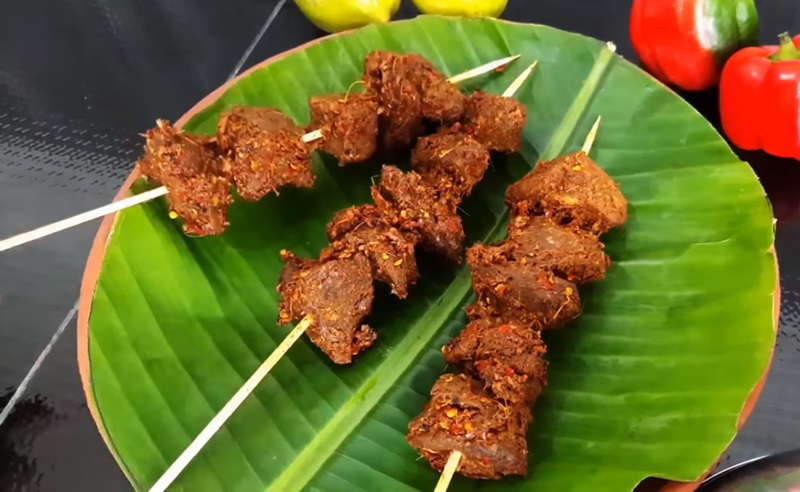
Javanese culinary delights are renowned for their opulent taste profiles and fragrant spice blends, with one of the most esteemed dishes being Satay. Originating from Indonesia, Satay is a time-honored delicacy featuring skewered and grilled meat, typically complemented by a savory peanut sauce. In Javanese gastronomy, Satay is frequently crafted with chicken or beef, although alternatives such as goat or mutton are also embraced. The meat undergoes marination in a blend of garlic, ginger, turmeric, and assorted spices, creating a delightful and aromatic essence. Charcoal grilling imparts a smoky and subtly charred essence to the skewered meat. What distinguishes Javanese Satay is the accompaniment of its peanut sauce. The sauce is concocted from ground peanuts, garlic, shallots, palm sugar, and tamarind, resulting in a harmonious blend of sweetness and tanginess. Typically served alongside the Satay skewers, the sauce provides diners with the opportunity to enhance their culinary experience by dipping the meat, thereby intensifying the overall flavor. Javanese Satay is commonly presented with steamed rice, cucumber slices, and lontong (compressed rice cakes), forming a wholesome and gratifying repast. This dish holds a special place in Javanese cuisine, cherished for its succulent meat, robust flavors, and the delightful fusion of peanut sauce and expertly grilled skewers.
Roti Canai

Roti canai is a popular dish in Javanese cuisine that originated from the Indian subcontinent. It is a flaky and crispy flatbread that is typically served with a flavorful curry or dal. The dough is made with flour, water, and ghee, which is then stretched and folded several times to create multiple layers. It is then cooked on a flat griddle until it becomes golden brown and crispy. The roti canai is usually enjoyed for breakfast or as a snack throughout the day. It is commonly served with a variety of dipping sauces, such as curry sauce, fish curry, or dal. The combination of the soft and chewy texture of the bread with the rich and aromatic flavors of the curry creates a delightful and satisfying meal. Roti canai is not only delicious but also versatile. It can be filled with various ingredients like eggs, onions, or meat to create different variations. This dish is loved by locals and tourists alike for its simplicity, taste, and the comforting feeling it brings.
Mie Goreng
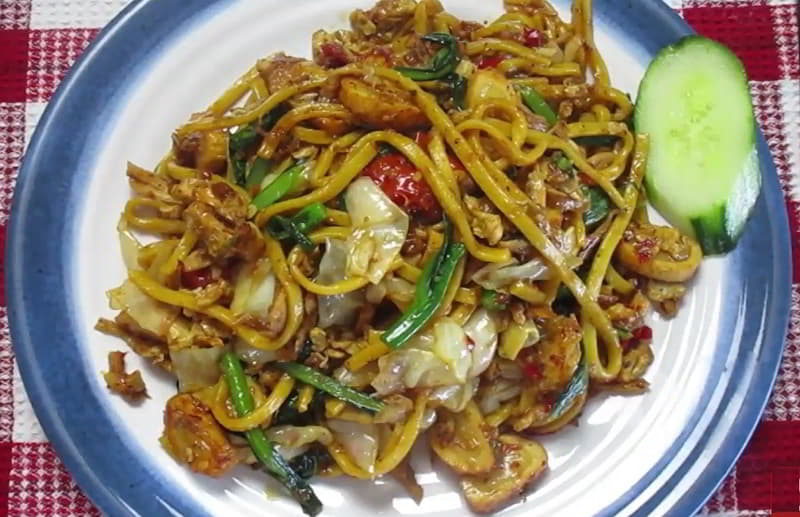
Mie goreng is a popular Indonesian dish that originated from Javanese cuisine. It is a flavorful stir-fried noodle dish that is loved by locals and tourists alike. The dish consists of yellow wheat noodles that are sautéed with an array of ingredients, resulting in a delightful medley of flavors and textures. The main ingredients of mie goreng typically include vegetables like cabbage, carrots, and bean sprouts, along with protein sources such as chicken, shrimp, or tofu. These ingredients are stir-fried in a fragrant blend of spices like garlic, shallots, and chili, which give the dish its distinctive aroma and heat. To enhance the taste, a combination of sweet soy sauce, oyster sauce, and kecap manis (sweet soy sauce) is added, creating a perfect balance of savory and sweet flavors. Mie goreng is often garnished with fried shallots, sliced cucumber, and a squeeze of lime juice to add freshness and tanginess. This versatile dish can be enjoyed on its own as a satisfying meal or served as a side dish alongside other Indonesian delicacies.
Murtabak

Murtabak is a savory stuffed pancake typically made from thin layers of dough that encase a flavorful filling. The filling traditionally consists of minced meat, often beef or chicken, mixed with a medley of aromatic spices such as garlic, onions, and curry spices. Some variations may also include eggs, potatoes, or other ingredients to enhance the taste and texture. The dough is skillfully folded over the filling, creating a multi-layered parcel that is then griddled or pan-fried until it achieves golden-brown crispiness. Murtabak is commonly served with a side of tangy and spicy dipping sauces, adding an extra layer of flavor to each bite. This dish is celebrated for its satisfying combination of crispy outer layers and the savory, well-seasoned filling, making it a favorite street food and comfort food choice in the region. Murtabak is often enjoyed as a hearty snack or as a substantial meal.
Appam
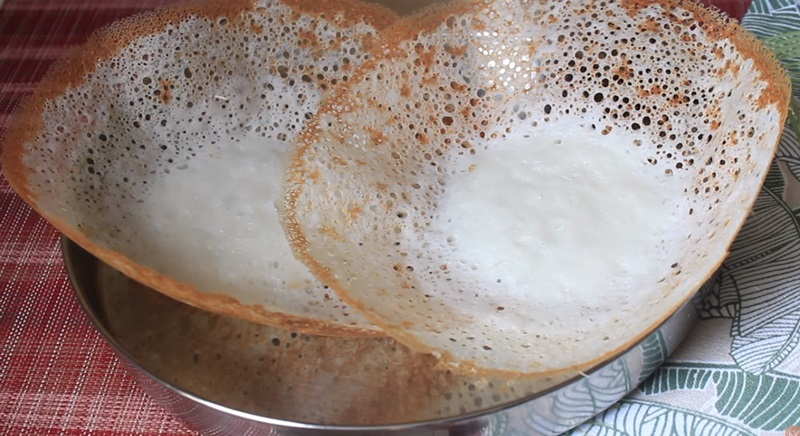
Appam, also known as kue apem, is a pancake made from a fermented rice batter and coconut milk. The process of making Appam starts by soaking rice overnight and grinding it into a smooth batter the next day. The batter is then mixed with coconut milk, which adds a creamy and slightly sweet taste to the pancakes. The mixture is left to ferment for a few hours, allowing the flavors to develop and the batter to rise. To cook Appam, a special pan called an Appam pan is used. It has a concave shape and is coated with a thin layer of oil or ghee. A ladleful of the batter is poured into the pan, and it is swirled around to spread the batter evenly. The pancake is then covered and cooked until it becomes golden brown and crispy on the edges. Appam is typically served with a variety of savory or sweet accompaniments. Popular savory toppings include coconut chutney, vegetable stew, or spicy sambal. Sweet options include coconut milk, palm sugar syrup, or banana slices.
Cendol

Cendol stands out as a well-loved traditional dessert deeply rooted in Javanese cuisine. This cool and sweet delight features a foundation of coconut milk, vibrant green jelly noodles infused with pandan flavor, and a generous drizzle of palm sugar syrup. Served chilled over crushed ice, it becomes an ideal treat to combat the tropical warmth. The green jelly noodles, crafted from rice flour and pandan leaf extract, contribute a soft and chewy texture, imparting a distinctive quality to the dish. The sweetened coconut milk, combined with the palm sugar syrup, is pivotal in shaping cendol's uniquely sweet and luscious taste. Enhancements to the dessert often include toppings like red beans, jackfruit, or sweet corn, providing an additional layer of both texture and flavor. The harmonious blend of creamy coconut milk, invigorating jelly noodles, and the sweetness of palm sugar syrup yields a gratifying balance that is simultaneously indulgent and refreshing.
Bibingka
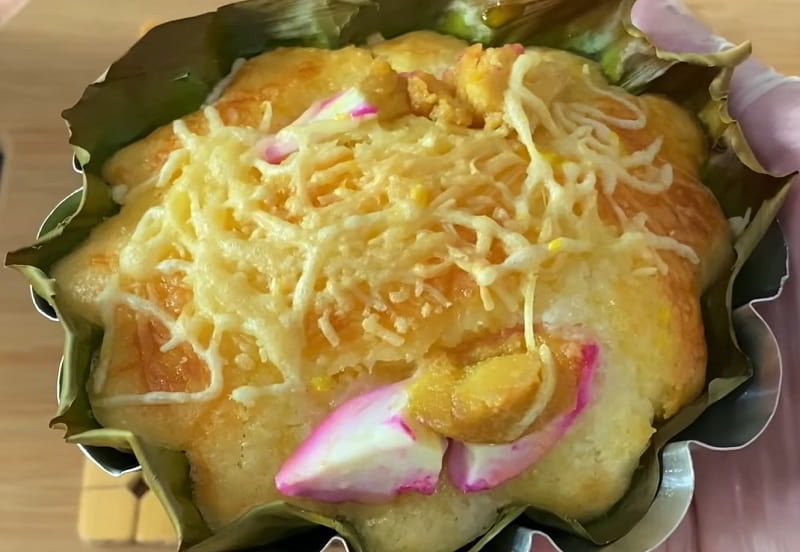
Bibingka is a sweet rice cake that holds a special place in the hearts and palates of the Javanese people. Bibingka is typically made from glutinous rice flour, coconut milk, and palm sugar, which are mixed together to form a smooth batter. The batter is then poured into individual molds and steamed until it becomes soft and slightly chewy. The result is a delectable treat with a subtle coconut aroma and a hint of sweetness from the palm sugar. To enhance its flavor and texture, Bibingka is often topped with grated coconut or sprinkled with sesame seeds. Sometimes, it is even filled with a variety of ingredients such as banana, jackfruit, or pandan leaves to add an extra dimension to the dish. This delightful Javanese Bibingka is not only a treat for the taste buds but also a feast for the eyes. Its golden hue and inviting aroma make it a visually appealing dessert that is often served during special occasions and festive celebrations. Overall, Javanese Bibingka is a true representation of the rich culinary heritage of the island. Its combination of simple ingredients and intricate flavors make it a beloved dish that embodies the essence of Javanese cuisine.
Ginger Tea

Javanese cuisine is known for its rich flavors and unique blend of spices, and one item that encapsulates this culinary tradition is wedang jahe, a version of ginger tea. This traditional Javanese beverage is a delightful combination of ginger, palm sugar, and water, resulting in a refreshing and invigorating drink. To make teh jahe, fresh ginger is peeled and thinly sliced before being boiled with water and palm sugar. The ginger infuses the water with its distinct flavor, creating a spicy and slightly sweet taste. Palm sugar, with its caramel-like notes, adds a depth of sweetness that complements the ginger perfectly. The resulting tea is not only delicious but also offers numerous health benefits.
Lontong
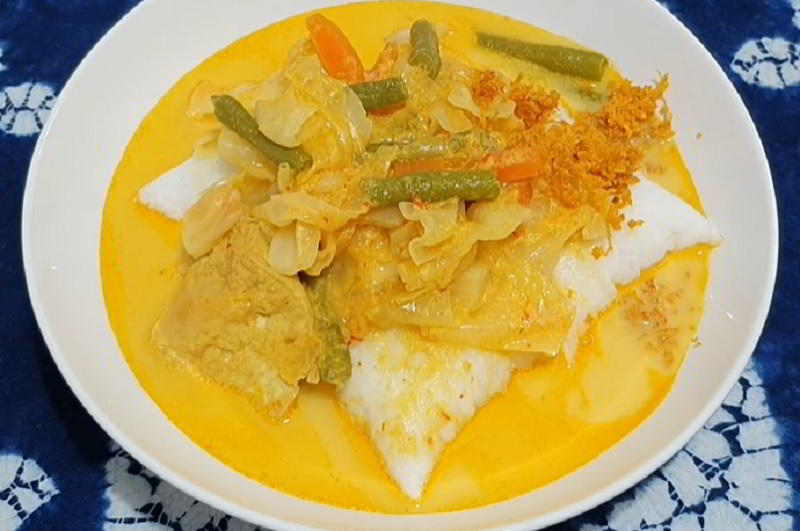
Lontong holds a prominent place in Javanese cuisine, admired for its straightforward yet flavorful composition. This customary dish comprises dense rice cakes, often enveloped in banana leaves and then boiled to achieve a firm and compact consistency. The method involves tightly packing rice into a banana leaf casing, giving rise to shapes such as cylinders or cuboids. Renowned for its versatility, lontong harmonizes seamlessly with a diverse array of savory dishes. It serves as a substantial foundation for an assortment of stews, curries, or grilled meats. The inherent neutral taste of the compressed rice cakes allows them to absorb and complement the rich flavors of the accompanying dishes.
Rawon
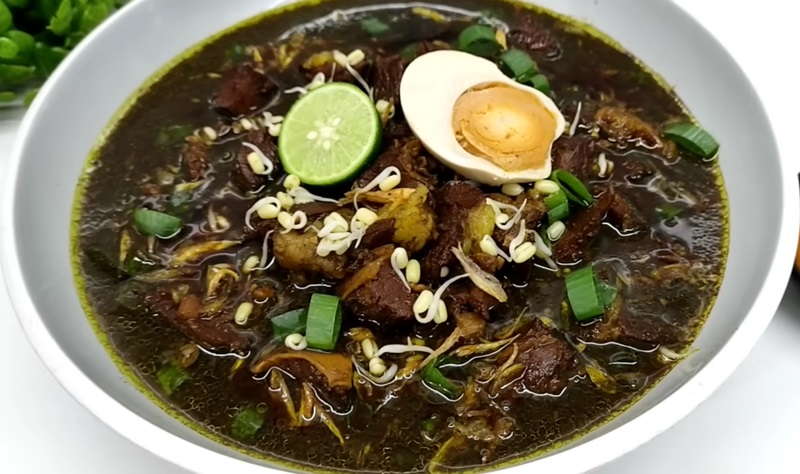
Rawon is a flavorful and aromatic black beef soup that is widely enjoyed in Indonesia. The distinct dark color of the soup comes from the use of keluak, a type of nut that also adds a unique earthy taste to the dish. The main ingredient in rawon is beef, usually in the form of chunks or ribs, which are simmered for hours until tender. The broth is made from a combination of various spices such as shallots, garlic, ginger, galangal, and coriander. Additionally, tamarind paste and Indonesian bay leaves are added to enhance the flavor. The soup is then cooked slowly with the keluak nut, which gives it a rich black color. Rawon is usually served with steamed rice, bean sprouts, salted eggs, and sambal, a spicy chili paste. The combination of tender beef, aromatic broth, and side dishes creates a delicious and satisfying meal.
Bakpia

Bakpia is a sweet pastry featuring diverse fillings, with mung bean or green bean paste being the most prevalent. The dough, composed of wheat flour, sugar, salt, and water, contributes to a soft and slightly chewy texture. The fillings for Bakpia involve mashing cooked mung beans or green beans and blending them with sugar, along with additional flavorings like pandan or cinnamon. The resulting mixture is shaped into small balls and placed onto the dough. Careful folding and sealing of the dough create compact, round, or square-shaped pastries. Baked to a golden brown hue, Bakpia boasts a crispy outer layer that contrasts beautifully with the sweet and creamy filling. This delectable snack or dessert is commonly savored, often paired with a cup of hot tea or coffee. While Bakpia is particularly popular in Yogyakarta, its widespread availability extends throughout Indonesia, showcasing its widespread appeal.
Tumpeng
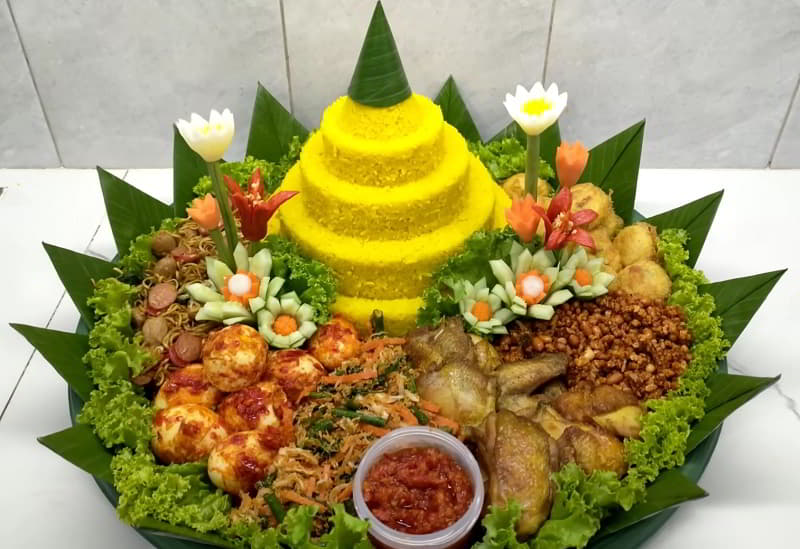
Tumpeng is a traditional Javanese dish that holds a significant cultural and symbolic meaning in Indonesian cuisine. It is often served during special occasions and celebrations as the centerpiece of the meal. Tumpeng consists of a cone-shaped mound of steamed rice, usually yellow in color, which is surrounded by an array of colorful and flavorful side dishes. The yellow rice itself is made by cooking rice with coconut milk and turmeric, giving it a vibrant and fragrant taste. The cone shape represents a mountain, symbolizing the harmony between humans and nature, and is considered a sign of gratitude and prosperity. The accompaniments that accompany the tumpeng vary but typically include an assortment of vegetables, such as fried tempeh, tofu, shredded omelet, stir-fried vegetables, and spicy sambal chili sauce. Meat dishes like grilled chicken or beef rendang may also be included. Tumpeng is not only a feast for the taste buds but also a visual spectacle, with its vibrant colors and artistic presentation.
Ayam Geprek

Ayam geprek is a popular dish in Javanese cuisine that is loved for its fiery and flavorful taste. It is made with fried chicken that is coated with a spicy sambal (chili paste) and then crushed or "geprek" with a pestle and mortar to bring out the flavors even more. The chicken is first marinated with a mixture of spices like garlic, shallots, turmeric, and coriander before being deep-fried until crispy and golden. The sambal is made by grinding together chili peppers, garlic, shallots, and other spices, which are then sautéed until fragrant. Once the chicken is fried, it is generously smothered with the sambal, allowing the spicy flavors to penetrate the meat. The final touch is the crushing or "geprek" process, which adds an extra layer of texture and intensifies the flavors. Ayam geprek is typically served with steamed rice and a side of fresh vegetables, such as cucumber and lettuce, to balance out the spiciness.
Ayam Penyet
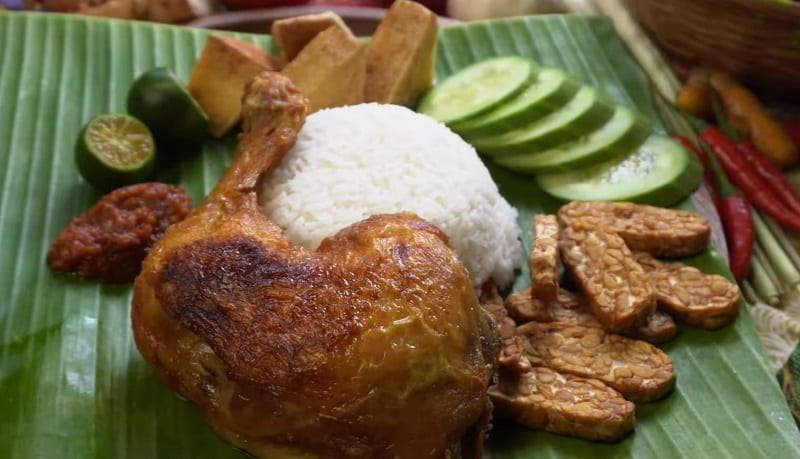
Ayam penyet is a popular dish in Javanese cuisine that consists of deep-fried chicken served with a side of aromatic rice, sambal (a spicy chili-based sauce), and assorted vegetables. The name "ayam penyet" translates to "squeezed chicken", which refers to the unique preparation method of flattening the chicken before frying it to achieve a crispy exterior and tender interior. The chicken is marinated in a blend of Indonesian spices, such as garlic, ginger, turmeric, and coriander, which impart a rich and flavorful taste. Once cooked, it is served with a generous amount of sambal, which adds heat and a tangy flavor to the dish. The sambal is typically made from chili peppers, shrimp paste, tomatoes, shallots, and lime juice. The dish is further complemented by a side of fragrant rice, which is cooked with pandan leaves to infuse it with a subtle aroma. It is also accompanied by fresh vegetables, such as cucumber, lettuce, and bean sprouts, which add a refreshing crunch to the meal.
Acar
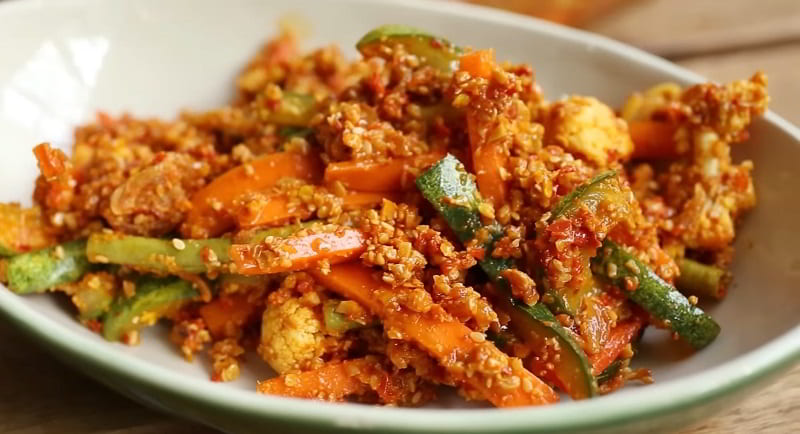
Acar is a type of pickled salad that is made from a variety of vegetables such as cucumber, carrot, cabbage, and shallots. These vegetables are thinly sliced and then soaked in a sweet and sour marinade made from vinegar, sugar, and spices. The key to a good acar dish is the balance of flavors. The sweet and sour marinade is complemented by the addition of aromatic spices such as ginger, garlic, and chili. The vegetables absorb these flavors and become crisp and flavorful. Acar is commonly served as a side dish or condiment to accompany main meals. It adds a refreshing and tangy element to rich and spicy Javanese dishes.
Pecel
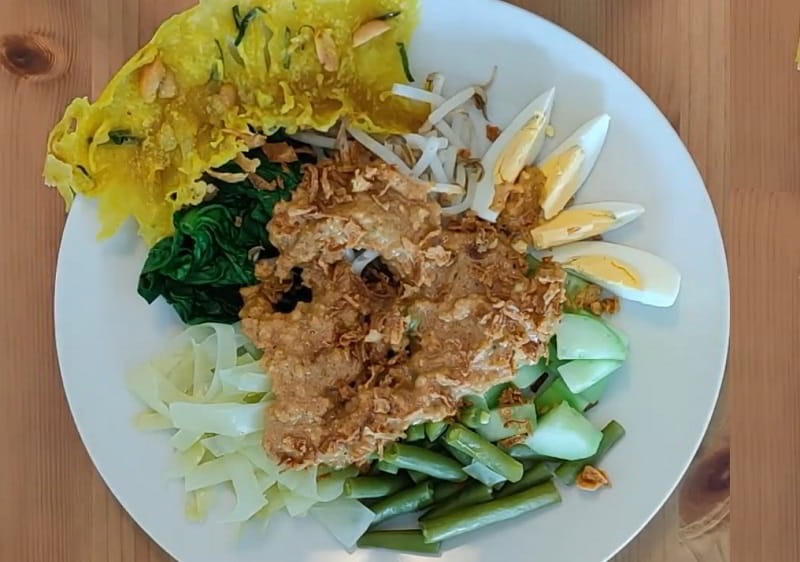
Pecel is a salad made with an array of fresh vegetables, typically including bean sprouts, spinach, long beans, and cucumber. The vegetables are blanched to retain their crispness and vibrant colors. The highlight of Pecel is the rich and aromatic peanut sauce that accompanies the vegetables. This sauce is made by grinding roasted peanuts with a blend of spices such as garlic, chili, palm sugar, tamarind, and lime juice. The result is a thick, creamy sauce with a perfect balance of sweet, tangy, and spicy flavors. Pecel is often served with steamed rice or rice cakes, and it can be enjoyed as a light and refreshing dish on its own or as a side dish to complement other main courses. It is a dish that showcases the freshness and diversity of Javanese vegetables, and the peanut sauce adds a distinct and delightful twist to the overall flavor profile.
Tauco
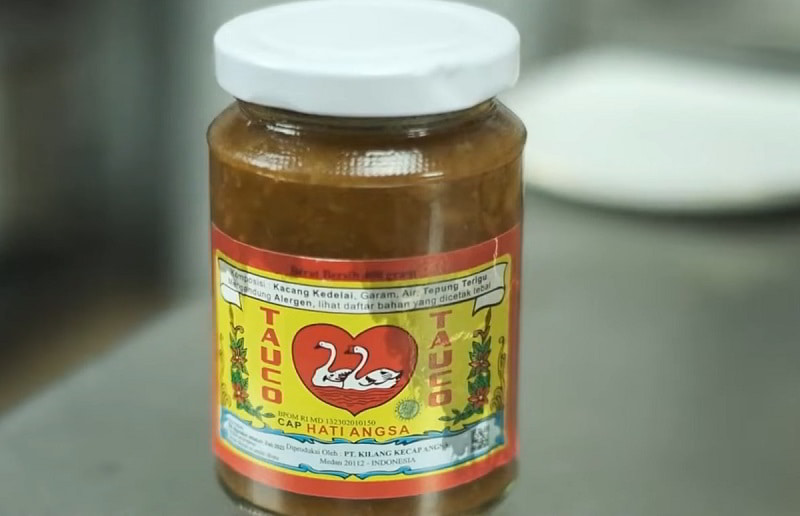
Tauco is a prominent condiment in Indonesian cuisine, renowned for its distinctive flavor and versatile use. This traditional sauce is crafted through the fermentation of soybeans, salt, and water, resulting in a paste-like consistency. During the fermentation process, the soybeans develop a unique umami taste, and the sauce gains a pungent aroma. The color of tauco can range from light brown to dark brown, and its texture varies from chunky to smooth, depending on regional preferences. This condiment is appreciated for its complex and savory profile, with hints of saltiness and earthiness. Tauco is commonly employed to enhance the flavor of various dishes, such as stir-fries, soups, and stews. It serves as a foundational element in Indonesian cuisine, contributing depth and richness to a wide array of culinary creations. Whether used as a marinade, seasoning, or a dipping sauce, tauco adds a distinctive and savory character to Indonesian dishes, making it an indispensable component in the country's vibrant gastronomic tradition.
Bakmi
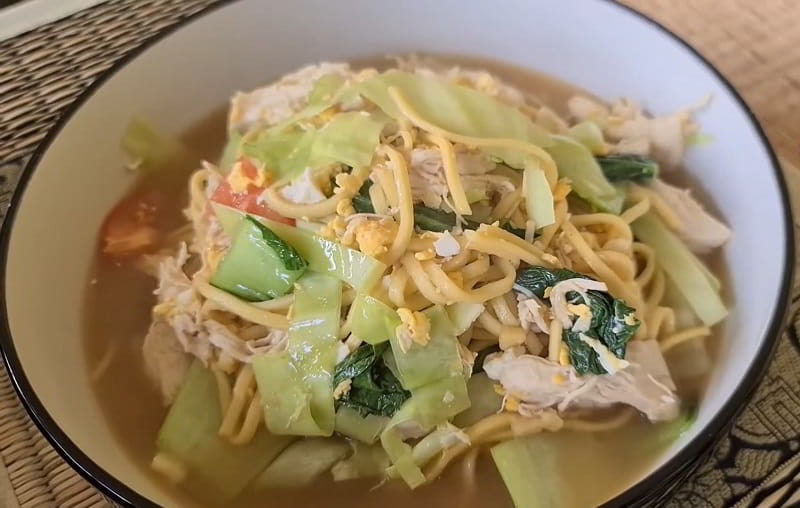
Bakmi is a flavorful noodle dish that features yellow wheat noodles, commonly cooked with chicken or pork, and an array of aromatic spices and vegetables. The base of the dish is the flavorful sauce, usually made from soy sauce, oyster sauce, and various spices like garlic, ginger, and shallots. The noodles are then stir-fried with the sauce until they are perfectly coated and infused with all the delicious flavors. To enhance the taste, various toppings and accompaniments are added, such as sliced chicken or pork. Some variations may also include shrimp, mushrooms, or fried shallots. Bakmi is often served with a side of broth or soup, which can be customized with additional spices or herbs according to personal preference. It is common to garnish the dish with a squeeze of lime juice and a sprinkle of chili flakes for an extra kick.
Gudeg
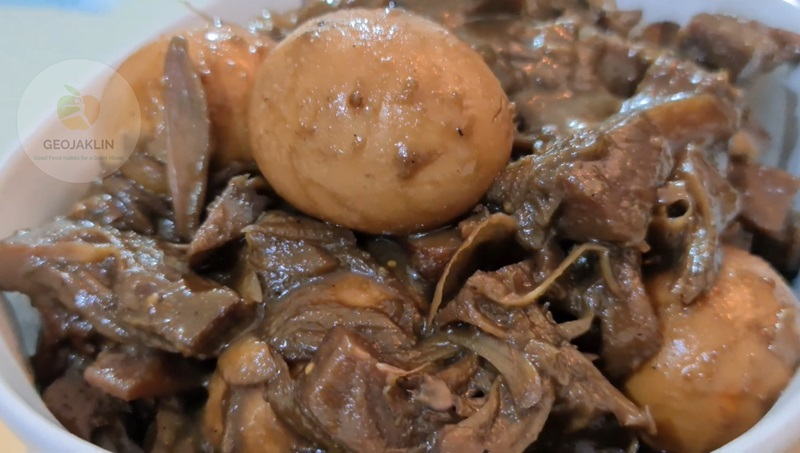
Gudeg is a traditional Indonesian stew. This aromatic and flavorful dish is made from young jackfruit cooked with palm sugar, coconut milk, and various spices. It is often served with steamed rice, chicken, boiled egg, and krecek (a stew made from crispy beef skin). The process of making gudeg is time-consuming and requires patience. The young jackfruit is boiled until tender and then cooked with a rich and sweet mixture of palm sugar and coconut milk. This slow cooking process allows the flavors to blend together, creating a unique and satisfying taste. The resulting gudeg is a sweet and savory dish with a rich and creamy texture. The sweetness of the palm sugar complements the mild spiciness of the spices, creating a harmonious balance of flavors. The tender jackfruit absorbs all the flavors, making it a delightful and satisfying dish. Gudeg is often enjoyed as a main dish for lunch or dinner.
Nasi Ambeng
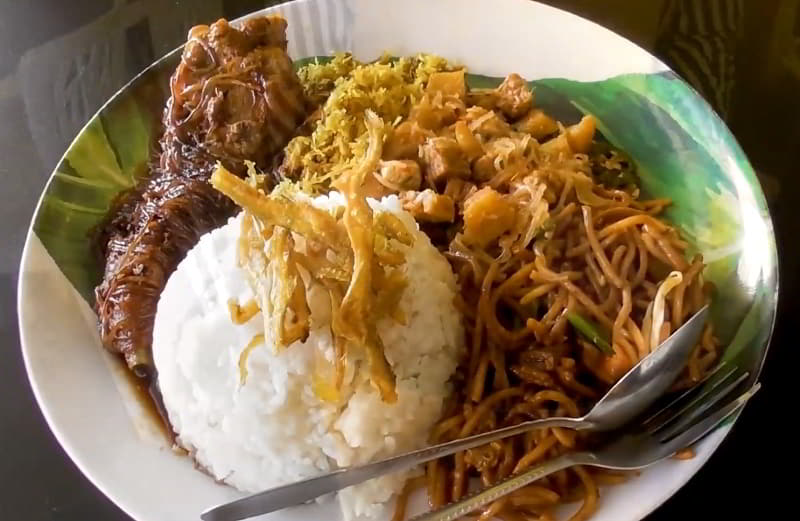
Nasi Ambeng is a traditional Javanese dish that originated from the island of Java in Indonesia. It is a communal meal that is usually served during special occasions or as a gesture of hospitality. The dish consists of a variety of components, all arranged on a large platter and shared among the diners. At the center of the platter is a mound of fragrant steamed rice, which is surrounded by a selection of side dishes. These side dishes typically include grilled or fried chicken, beef rendang (a rich and spicy braised beef dish), sambal goreng (a spicy stir-fried vegetable dish), urap (a salad made with steamed vegetables and grated coconut), and tempeh or tofu. There may also be additional accompaniments such as pickles, crackers, and boiled eggs.
Bihun Goreng
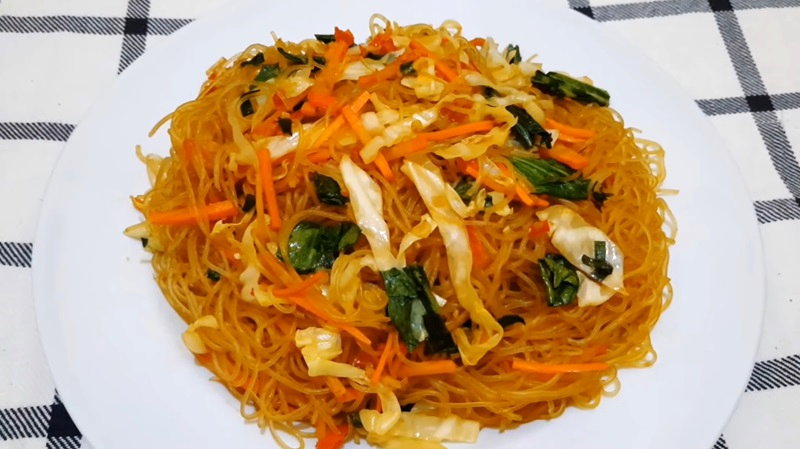
Bihun goreng is a popular dish in Javanese cuisine that is loved for its delicious flavors and comforting taste. This dish features stir-fried rice vermicelli noodles, commonly known as bihun, along with a variety of ingredients that create a mouthwatering combination. The dish typically starts with the noodles being soaked in hot water until they become soft and pliable. They are then stir-fried with an assortment of vegetables, such as carrots, cabbage, and bean sprouts, adding a vibrant and crunchy texture to the dish. To enhance the flavors, proteins like chicken, shrimp, or tofu are often included. The seasoning for bihun goreng usually consists of a harmonious blend of garlic, shallots, and Indonesian sweet soy sauce, known as kecap manis. This combination gives the dish a rich umami taste and a hint of sweetness. It is also common to find some chili paste or sambal on the side, for those who prefer a spicy kick. Bihun goreng is often garnished with fresh herbs like cilantro or spring onions and served with a side of pickles or sliced cucumber to balance the flavors.
Mie Jawa
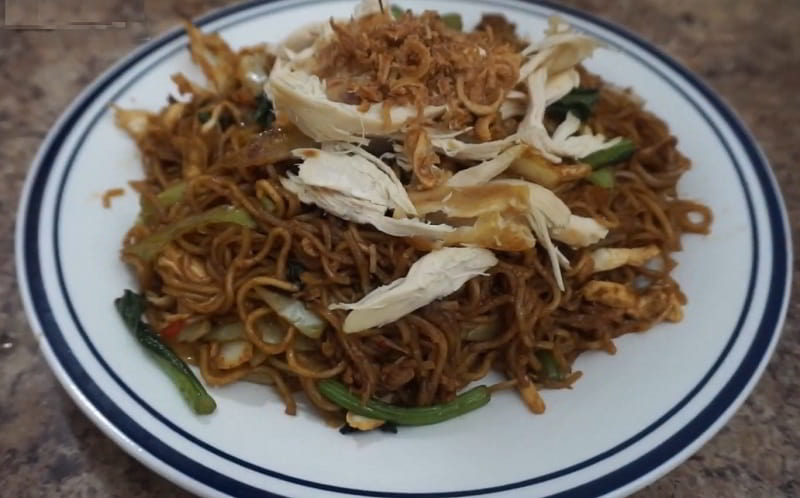
Mie Jawa is a traditional Javanese noodle dish that is popular in Indonesia. It is a flavorful and hearty dish that showcases the rich culinary heritage of the Javanese people. Mie Jawa is typically made with yellow wheat noodles that are stir-fried with various ingredients to create a delicious and satisfying meal. The dish is usually cooked with a combination of vegetables, such as cabbage, carrots, and bean sprouts, as well as protein sources like chicken, beef, or shrimp. The noodles are cooked until soft and then tossed in a fragrant sauce made from a blend of spices, garlic, and sweet soy sauce.
Jajan Pasar

Jajan pasar, a traditional dish from Javanese cuisine, is a delightful and colorful treat that is commonly found in the traditional markets of Java, Indonesia. Jajan pasar translates to "market snacks" and it refers to a variety of sweet and savory snacks that are typically sold in these markets. One of the most popular jajan pasar dishes is klepon, which is a sweet rice cake filled with liquid palm sugar and coated with grated coconut. The chewy texture of the rice cake combined with the burst of sweet, gooey palm sugar creates a heavenly combination. Other jajan pasar dishes include kue lapis, a layered cake made from rice flour, coconut milk, and pandan leaves, and onde-onde, deep-fried glutinous rice balls filled with sweet mung bean paste. These jajan pasar dishes are not only delicious but also visually appealing, as they come in vibrant colors and intricate designs. They are often enjoyed as a snack with a cup of hot tea or coffee, or as a dessert after a meal.
Krupuk Kulit
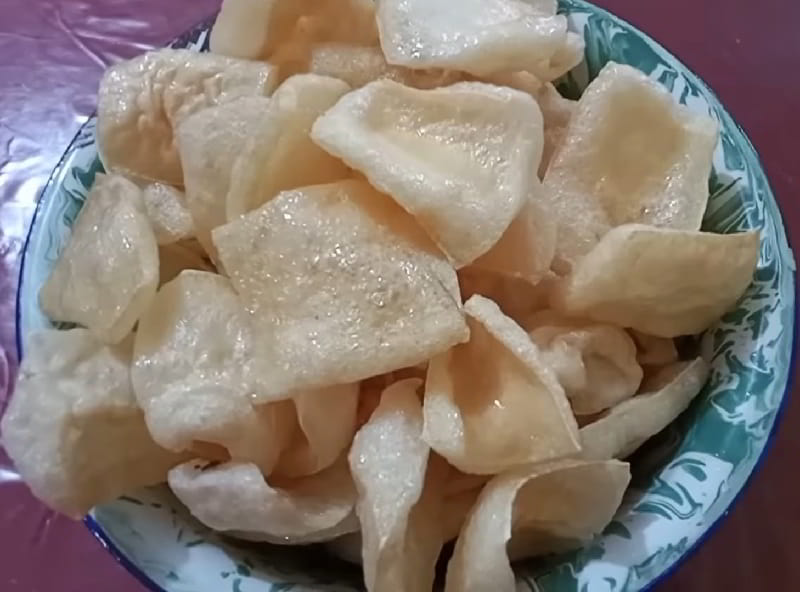
Krupuk Kulit, also known as skin crackers, is a notable and flavorful snack. This traditional treat is made from the deep-fried, thinly sliced and seasoned cattle skin. The skin is usually seasoned with a blend of spices, including garlic, shallots, and various regional herbs, providing a savory and aromatic profile. The preparation of Krupuk Kulit involves a meticulous process of slicing the cattle skin into thin strips, seasoning them generously, and deep-frying until they attain a crispy and golden-brown texture. The result is a crunchy snack with a rich, savory taste that reflects the infusion of spices during the frying process. Krupuk Kulit is commonly enjoyed as a standalone snack or served as a crunchy accompaniment to meals. Its popularity spans various regions in Indonesia, showcasing the diverse and flavorful nature of Indonesian culinary traditions.
Sayur Lodeh
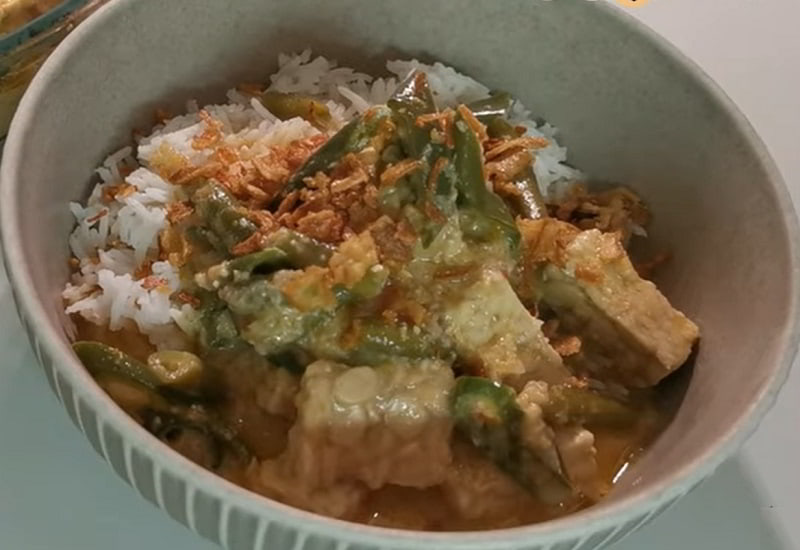
Javanese cuisine is known for its rich and diverse flavors, and one of its popular dishes is Sayur lodeh. Sayur lodeh is a traditional Indonesian vegetable stew that is commonly enjoyed in Java and other parts of Southeast Asia. The dish is made by simmering a variety of vegetables such as cabbage, carrots, green beans, and tofu in a flavorful coconut milk broth. The vegetables are cooked until they are tender, while still maintaining their vibrant colors and natural flavors. The coconut milk adds a creamy and slightly sweet taste to the dish, balancing out the spiciness from the aromatic spices that are used, such as turmeric, ginger, and garlic. Sayur lodeh is often served with steamed rice and other side dishes like fried tempeh or crispy anchovies.
Nasi Liwet
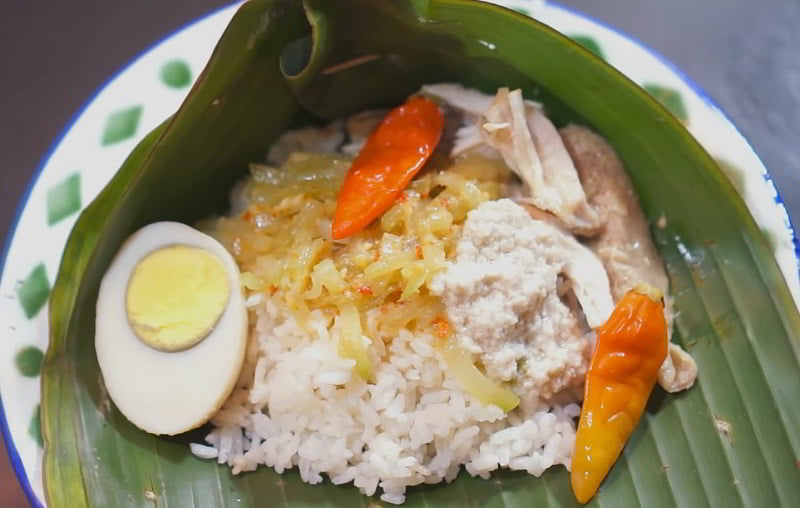
Nasi Liwet is a traditional Javanese dish from Indonesia, known for its fragrant and flavorful preparation. It typically consists of rice cooked with coconut milk, shallots, garlic, and various herbs and spices. The dish is often cooked in one pot, infusing the rice with the rich flavors of coconut and aromatic seasonings. In addition to the seasoned rice, Nasi Liwet is commonly served with an array of side dishes. These may include chicken, salted fish, eggs, tofu, tempeh, and various vegetables. The side dishes are often prepared with a blend of spices, creating a harmonious and well-balanced meal. This flavorful and hearty dish is a popular choice for celebratory occasions and family gatherings in Javanese cuisine, showcasing the rich flavors and diverse ingredients of the region.
Swikee
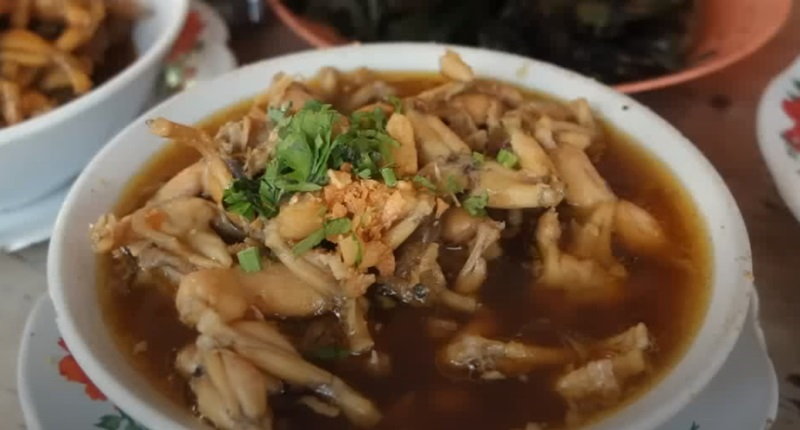
Swikee is a traditional Chinese-Indonesian dish that consists of deep-fried frog legs coated in a savory batter, often seasoned with garlic, ginger, and other aromatic spices. The dish is typically served hot and crispy, accompanied by a side of chili sauce or sambal for added flavor. Swikee is beloved for its tender texture, subtle flavors, and satisfying crunch, making it a popular delicacy in Hakka cuisine and among adventurous food enthusiasts in Indonesia and beyond.
Pindang
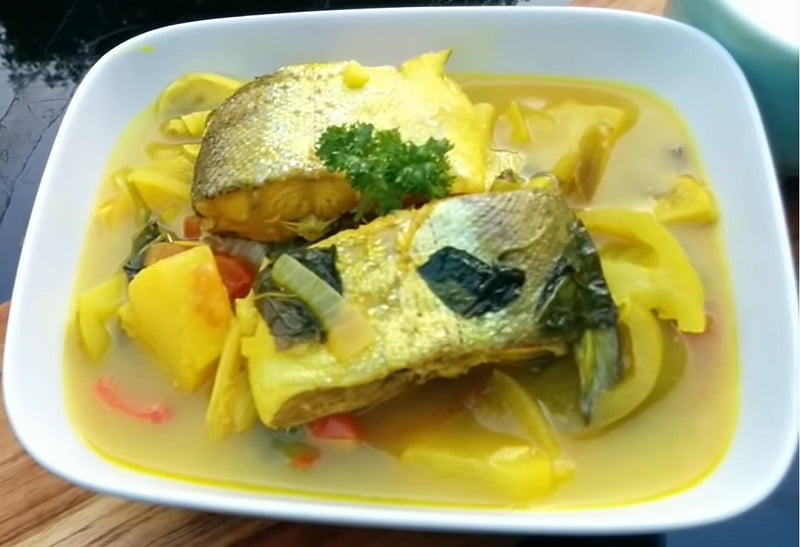
Javanese cuisine is known for its rich flavors and unique combinations of ingredients, and one popular dish that exemplifies this is Pindang. Pindang is a traditional Javanese dish that is often made with fish, although it can also be made with other meats such as chicken or beef. The preparation of Pindang involves boiling the meat or fish in a flavorful broth made from various spices, such as garlic, shallots, ginger, galangal, and tamarind. This combination of spices gives Pindang its distinct tangy and savory taste. The dish is typically served with steamed rice and accompanied by a variety of side dishes. The tender and juicy meat or fish is infused with the delicious flavors of the broth, making each bite a burst of deliciousness.
Pecel Lele
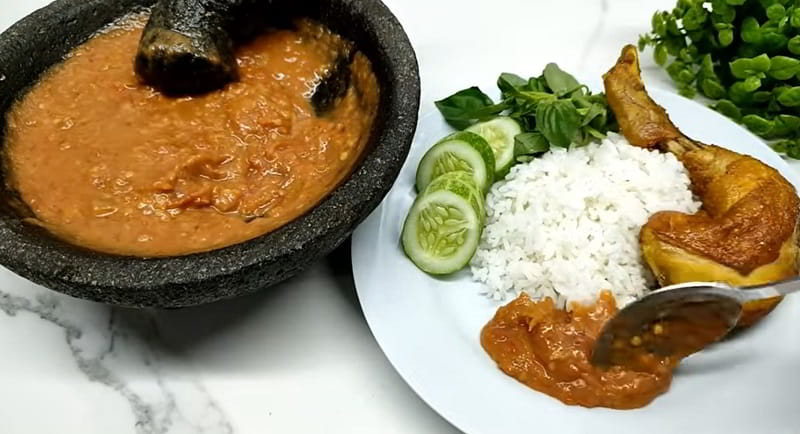
Pecel lele is a traditional Javanese dish that is well-loved for its unique flavors and textures. This popular dish features deep-fried catfish served with a flavorful chili sauce named sambal, accompanied by a side of steamed rice and fresh vegetables. The star of the dish is the catfish, which is marinated in a mixture of spices such as turmeric, garlic, and ginger before being deep-fried to achieve a crispy outer layer and moist, tender flesh. The dish is typically served with a generous amount of fresh vegetables like cucumber, bean sprouts, and water spinach, providing a refreshing contrast to the rich and savory catfish.
Opor Ayam
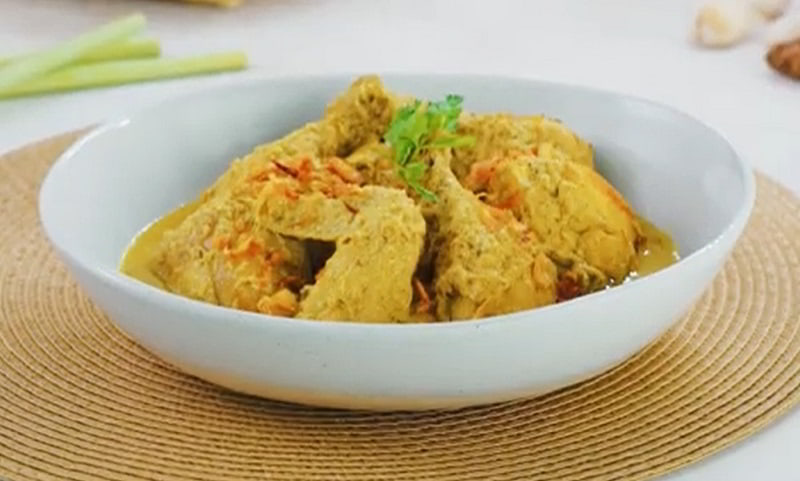
Opor Ayam is a traditional dish from Javanese cuisine, known for its rich and aromatic flavors. It is a hearty chicken dish cooked in creamy coconut milk, infused with an array of spices and herbs. The chicken is first marinated with a blend of ginger, garlic, turmeric, and other aromatic spices, which gives it a delightful flavor. It is then slowly simmered in a mixture of coconut milk, lemongrass, galangal, and kaffir lime leaves, resulting in a thick and creamy gravy. The dish is typically served with steamed rice or lontong (compressed rice cakes), which perfectly complements the savory and fragrant opor ayam. The creamy sauce coats the tender chicken pieces, making each bite melt in your mouth.
Tongseng
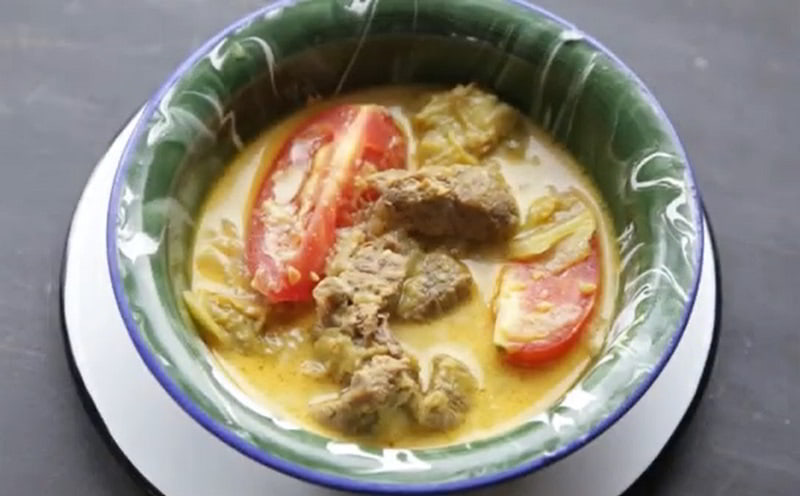
Tongseng is a hearty and flavorful meat stew that is typically made with chunks of mutton or beef, although variations with chicken or tofu are also common. The dish is cooked with a blend of aromatic spices such as garlic, shallots, ginger, and galangal, which are sautéed until fragrant. The key ingredient in tongseng is the addition of kecap manis, a sweet soy sauce that gives the dish its distinct flavor profile. The sauce is combined with coconut milk to create a rich and creamy gravy. Tongseng is also usually packed with vegetables such as cabbage, carrots, tomatoes, and green beans, adding a refreshing touch to the dish. Traditionally, tongseng is served with steamed rice, creating a fulfilling and satisfying meal.
Telur Pindang

Telur pindang is a traditional dish that features hard-boiled eggs cooked in a flavorful broth. The eggs are first boiled until they are fully cooked and then peeled, creating a smooth and tender texture. The broth is made by simmering a mixture of spices and herbs such as cinnamon, star anise, cloves, and nutmeg, giving the eggs a delightful aromatic flavor. Once the eggs are peeled, they are gently simmered in the broth for several hours, allowing them to absorb the rich flavors from the spices. The result is a dish with eggs that have a slightly sweet and savory taste, along with a subtle hint of spice. Telur pindang is often enjoyed as a side dish or snack, and it is commonly served with a rice dish.
Nasi Pecel
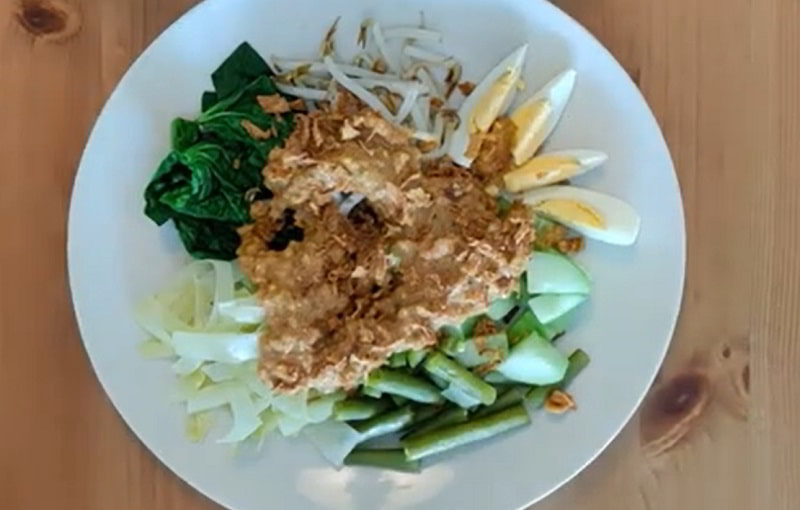
Nasi pecel is a traditional Javanese dish that is popular in Indonesia, particularly in the Central and East Java regions. It is a delightful and flavorsome dish that consists of steamed rice served with an assortment of blanched vegetables, peanut sauce, and various condiments. The star of nasi pecel is the rich and creamy peanut sauce, made by grinding roasted peanuts with garlic, chili, tamarind, and other spices. The sauce is then mixed with water to achieve a smooth consistency. This peanut sauce is poured generously over the steamed rice, giving it a burst of nutty and slightly spicy flavor. Accompanying the rice and peanut sauce are an array of blanched vegetables, such as spinach, bean sprouts, cabbage, and long beans. These vegetables provide a refreshing and crunchy contrast to the creamy sauce. Additionally, nasi pecel is often served with emping crackers, fried tempeh, fried tofu, and sometimes even fried chicken or boiled eggs.
Botok
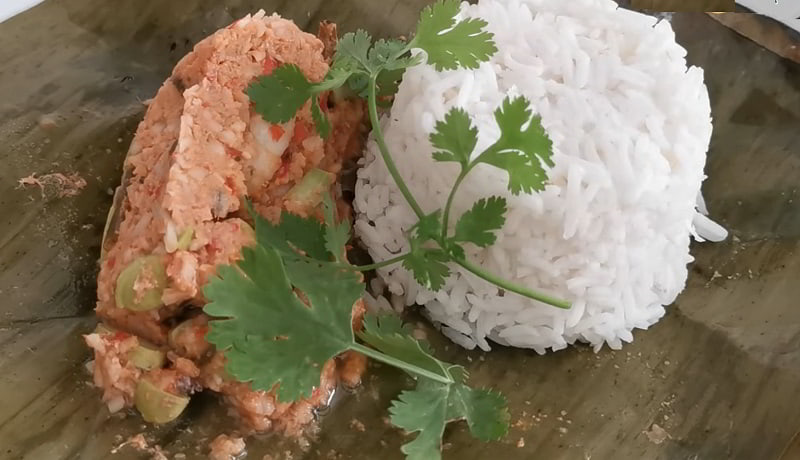
Botok is an Indonesian dish originating from the Javanese culture. It is a unique combination of steamed vegetables, fish or chicken, and aromatic spices wrapped in banana leaves. To prepare Botok, a mixture of grated coconut, shallots, garlic, chili, and a blend of flavorful spices such as turmeric, galangal, and lemongrass is made. This mixture is then combined with either flaked fish or minced chicken. The mixture is carefully wrapped in banana leaves, creating a neat parcel, before being steamed to perfection. The resulting Botok dish is a harmony of flavors. The coconut adds a creamy and slightly sweet taste, while the spices lend a fragrant and aromatic touch. The fish or chicken provides a savory element, making it a satisfying and well-rounded dish.
Arem-arem
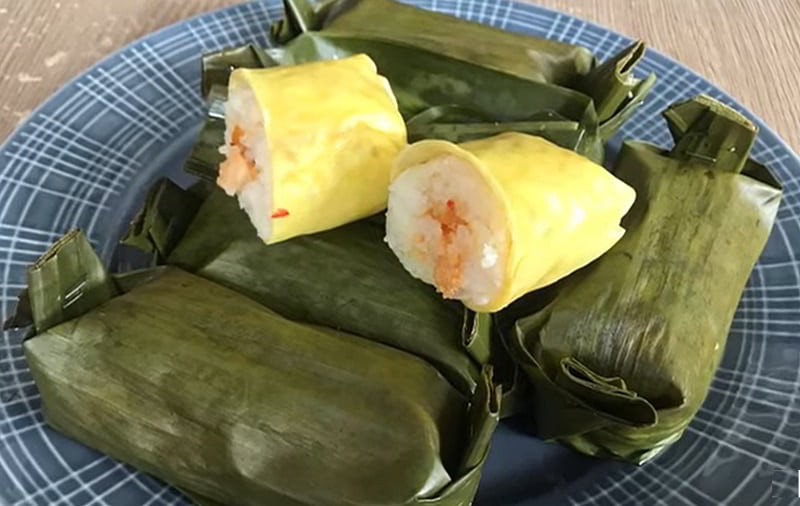
Arem-arem is a dish from Javanese cuisine that is popular in Indonesia. It is a type of snack or light meal that is often enjoyed during tea time or as a side dish. Arem-arem is made by wrapping a mixture of cooked rice and various fillings in banana leaves and then steaming it until it is cooked through. The fillings can vary, but commonly include vegetables, tofu, tempeh, and sometimes meat or seafood. The dish is known for its vibrant colors and flavors. The banana leaves not only add a distinctive aroma to the dish but also help to keep the rice rich and flavorful in taste.
Ayam Kecap
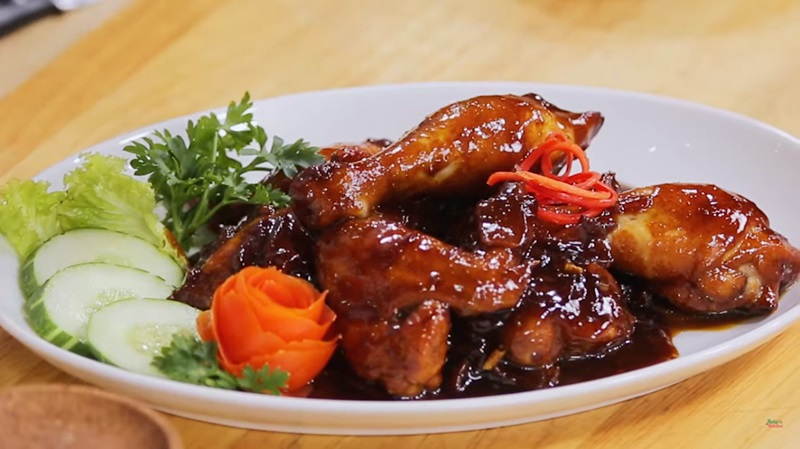
Ayam Kecap stands as a cherished Javanese classic celebrated for its luscious flavors and succulent chicken. Representing the bold and aromatic essence of Java, Indonesia, this dish spotlights chicken as its main star, marinated in a fragrant mixture of kecap manis (sweet soy sauce), garlic, ginger, and an array of spices. The chicken is gently simmered until it reaches a tender state, absorbing the rich essence of the marinade. Ayam Kecap distinguishes itself with its delightful blend of sweetness and savory notes, primarily attributed to the inclusion of kecap manis, a thick and sweet soy sauce. This ingredient imparts a caramel-like undertone, contributing to the dish's glossy appearance. To enhance the overall freshness, Ayam Kecap is often adorned with vibrant herbs like cilantro or scallions. A favored choice for family gatherings and special occasions in Java, Ayam Kecap encapsulates the culinary richness and aromatic charm emblematic of Indonesian cuisine.
Iga Penyet
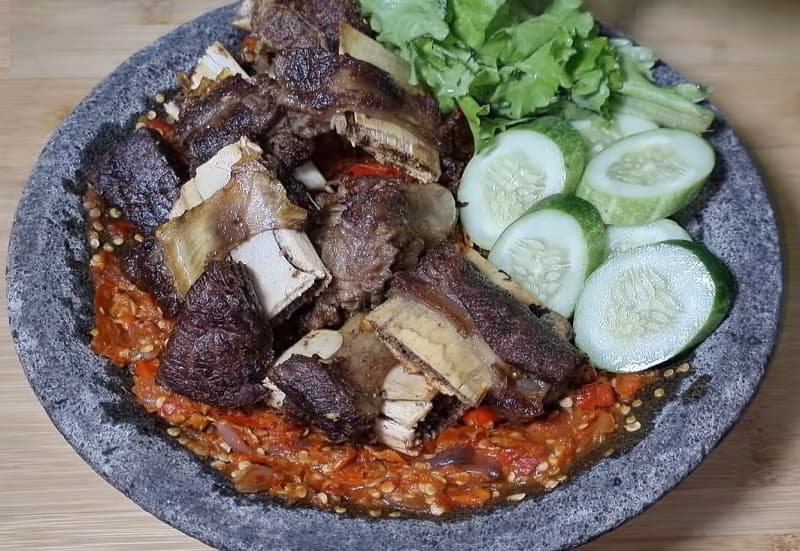
Iga penyet is a popular dish in Javanese cuisine that is known for its flavorful and tender beef ribs. "Iga" refers to the ribs, while "penyet" means to press or flatten. This dish is typically made by marinating the beef ribs in a mixture of spices such as garlic, ginger, coriander, and lemongrass, before grilling or deep-frying them to perfection. The highlight of iga penyet is the sambal penyet, which is a spicy chili paste made from a blend of chili peppers, shallots, garlic, and tomatoes. It adds a fiery kick and enhances the overall taste of the dish. The ribs are traditionally served with a side of steamed rice, fresh vegetables like cucumber and lettuce, and a dollop of sambal penyet.
Ayam Goreng Kalasan
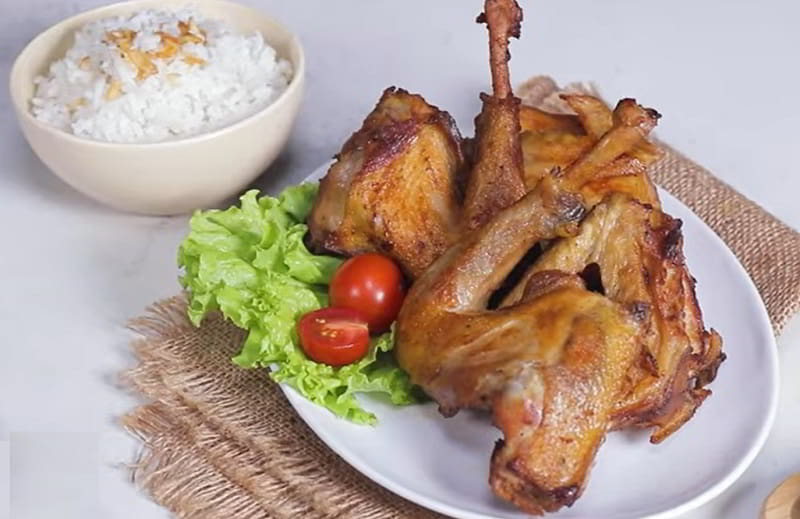
Ayam goreng kalasan is a traditional Javanese dish known for its flavorful and aromatic taste. It is a popular street food and a staple in Javanese cuisine. Ayam goreng kalasan is made by marinating chicken pieces in a mixture of spices and herbs such as garlic, shallots, coriander, turmeric, and galangal. The chicken is then deep-fried until it becomes golden brown and crispy. The marinade not only enhances the flavor but also helps to tenderize the meat. The dish is typically served with steamed rice, sambal (Indonesian chili sauce), and fresh vegetables such as cucumber and lettuce. The combination of the crispy chicken with the fragrant and savory marinade creates a delightful explosion of flavors in every bite.
Selat Solo
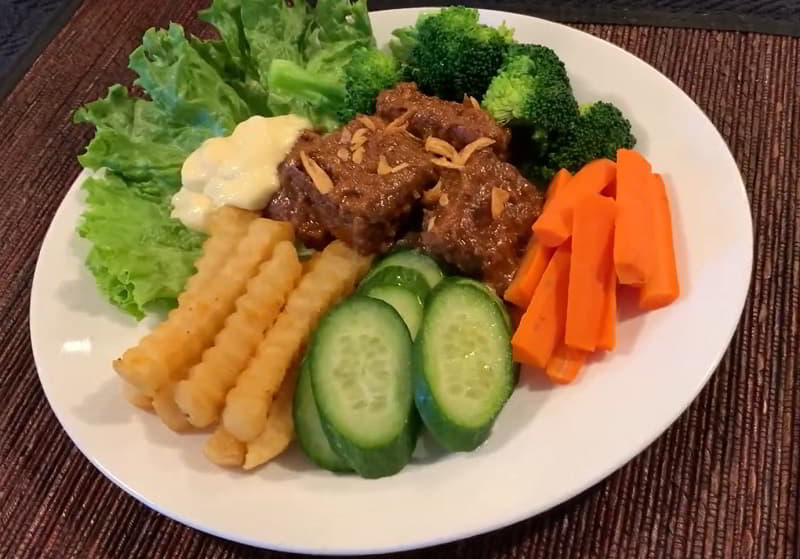
Selat Solo, translating to "Solo Salad" in Javanese, represents a fusion of Javanese and Western influences, originating as a specialty in Solo City, Central Java, Indonesia. This dish features braised beef tenderloin bathed in a thin, flavorful sauce crafted from a blend of garlic, vinegar, sweet soy sauce (kecap manis), Worcestershire sauce, water, and seasoned with nutmeg and black pepper. Accompanying the tender beef are hard-boiled eggs and an assortment of vegetables, including string beans, potatoes, tomatoes, lettuce, cucumbers, cauliflower or broccoli, and carrots. To enhance the culinary experience, the dish is garnished with potato chips and may include a side serving of mustard, hollandaise, or sauce gribiche. The resulting combination showcases a unique blend of textures and flavors, making Selat Solo a distinctive and delicious representation of culinary diversity.
Sup Kambing
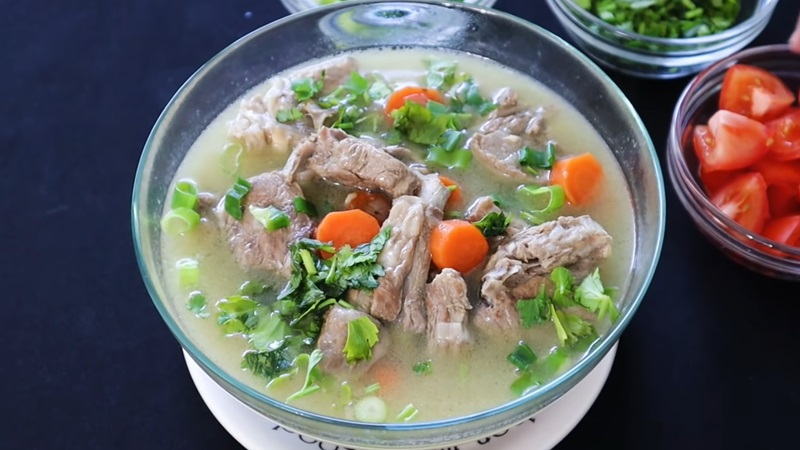
Sup Kambing is a traditional Javanese lamb soup that is loved by locals and visitors alike. This delicious dish is made by simmering tender pieces of lamb in a fragrant broth flavored with various herbs, vegetables, and spices. The key ingredients in Sup Kambing include lamb meat, onions, garlic, ginger, galangal, lemongrass, and a variety of aromatic spices such as cumin, coriander, and turmeric. These ingredients are simmered together to create a hearty and flavorful broth. The soup is then garnished with fresh herbs such as cilantro and green onions, which add a refreshing touch to the dish. The tender pieces of lamb and the flavorful broth create a harmonious combination that is both comforting and satisfying.
Krechek
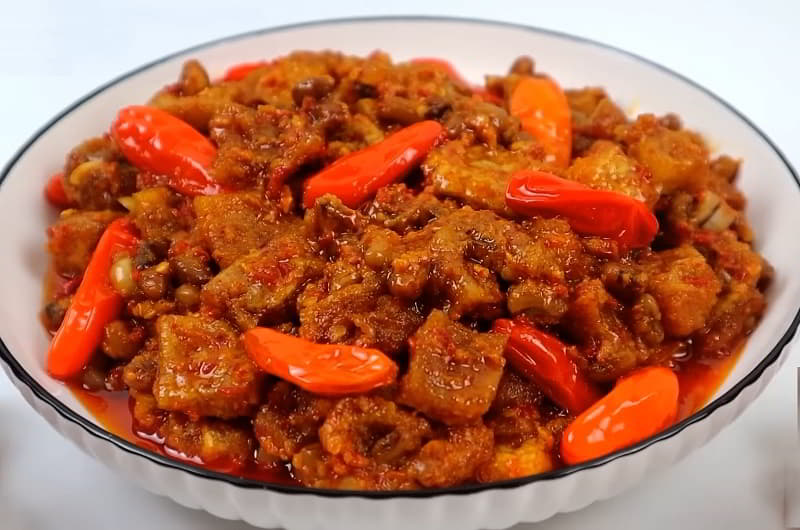
Krechek is a traditional Javanese dish that is known for its rich and flavorful taste. It is a popular dish in Javanese cuisine, often served during special occasions and festivities. The dish is made using cattle meat, which is cooked slowly in a blend of spices and herbs. The main ingredient in krechek is the meat, which is simmered until tender and infused with the fragrant flavors of the spices. The dish is typically cooked with ingredients such as garlic, shallots, ginger, galangal, lemongrass, and various aromatic spices. The result is a dish that is both aromatic and spicy. Krechek is often enjoyed with steamed rice or as a side dish to accompany other Javanese dishes.
Nasi Kucing
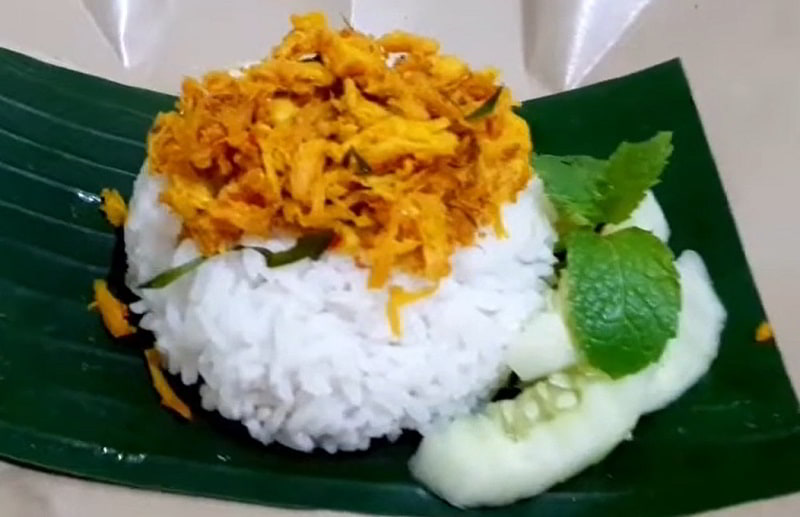
Nasi kucing is a popular dish in Javanese cuisine that originated from the island of Java in Indonesia. Translated as "cat rice," it is a unique and delicious dish that is commonly eaten as a snack or light meal. Nasi kucing is essentially a small portion of rice served with an array of small side dishes. The side dishes can vary, but common choices include sambal (a spicy chili paste), fried tempeh, fried tofu, shredded chicken or beef, and various vegetables. What makes nasi kucing special is its presentation. The small portion of rice is usually wrapped in a banana leaf or served on a small plate, resembling a cat's meal. It is a fun and playful way to enjoy a variety of flavors in one sitting. Nasi kucing is not only delicious, but it also reflects the Javanese culture of appreciating small portions and diverse flavors. It is a perfect choice for those looking to sample different Javanese dishes in one meal or for those seeking a light and satisfying snack.
Wingko

Wingko is a popular traditional Javanese dish that hails from Indonesia. This delicious dessert is made from grated coconut and glutinous rice flour, combined with palm sugar and baked until golden brown. The result is a sweet and sticky treat with a chewy texture and a rich coconut flavor. The process of making Wingko starts by mixing the grated coconut with the glutinous rice flour and palm sugar. The mixture is then spread evenly onto a baking sheet and baked until it turns crispy and caramelized. The dish is typically cut into small squares or rectangles before serving. Wingko is often enjoyed as a snack or dessert, especially during special occasions and festive seasons. It is a beloved treat in Javanese cuisine due to its unique combination of flavors and textures. The sweetness from the palm sugar perfectly complements the creamy and nutty taste of the coconut, creating a delightful indulgence for the taste buds. Whether enjoyed on its own or paired with a cup of hot tea or coffee, Wingko is a delectable treat that showcases the rich culinary heritage of Javanese cuisine.
Mie Bakso
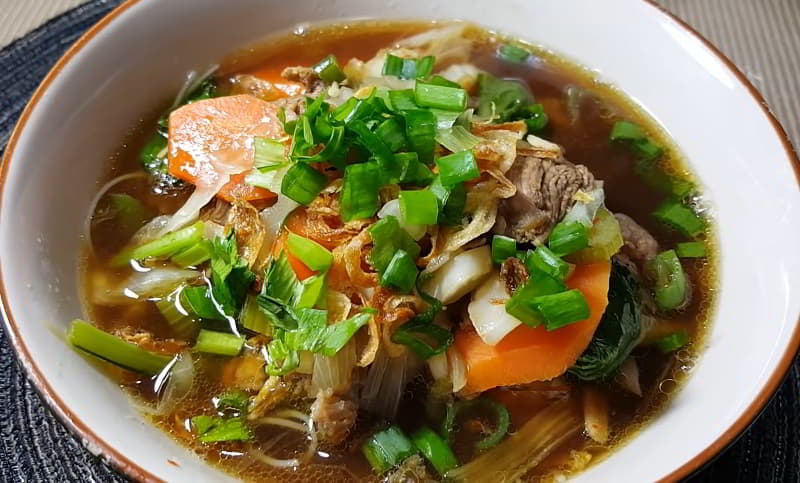
Mie bakso is a delicious and popular dish in Javanese cuisine. It is a flavorful and comforting noodle soup that is loved by locals and tourists alike. This dish consists of two main components: mie (noodles) and bakso (meatballs). The noodles used in mie bakso are typically egg noodles, which are cooked until they are tender and then placed in a bowl. The meatballs, made from a mixture of ground meat (usually beef or chicken), garlic, and various spices, are added to the bowl of noodles. These meatballs are soft and succulent, giving the dish a delightful texture. To enhance the flavor, the soup is made from a combination of beef or chicken broth, garlic, shallots, and various spices. The soup is then poured over the noodles and meatballs, creating a hearty and satisfying meal. Mie bakso is often served with condiments such as soy sauce, chili sauce, and fried shallots, which add an extra layer of flavor and texture. It is commonly enjoyed as a street food, with vendors selling it from their carts or small stalls. Overall, mie bakso is a must-try dish for anyone visiting Java. Its combination of noodles, meatballs, and flavorful broth make it a true delight for the taste buds.
Lontong Cap Go Meh
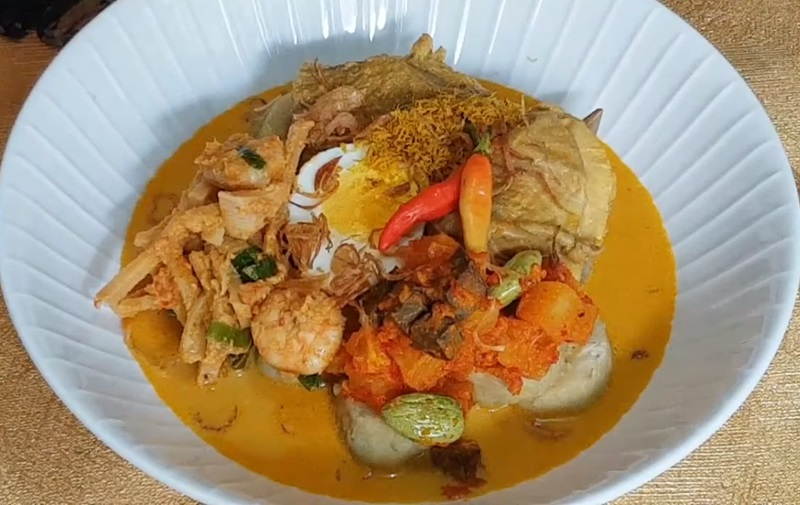
Lontong Cap Go Meh is a traditional Javanese dish that is popularly enjoyed during the Cap Go Meh festival, which marks the end of the Chinese New Year celebrations. This dish is a delightful combination of flavors and textures, showcasing the rich culinary heritage of Java. Lontong, which is a compressed rice cake, forms the base of the dish. It is made by boiling rice in a banana leaf pouch until it becomes compact and firm. The lontong is then sliced into bite-sized pieces and served with a delicious coconut milk-based curry. The curry is typically made with a variety of ingredients including chicken, beef, or vegetables. It is seasoned with aromatic spices such as lemongrass, galangal, turmeric, and coriander, which lend a fragrant and vibrant flavor to the dish. Additionally, the curry is often enriched with coconut milk, adding a creamy and slightly sweet element to the overall taste. Lontong Cap Go Meh is usually garnished with fried shallots, sliced cucumber, and sambal, a spicy chili paste, which adds a spicy kick to the dish. The combination of the soft and chewy lontong, flavorful curry, and the various toppings creates a harmonious blend of textures and tastes that is truly satisfying.
Kamir

Kamir, alternatively known as khamir or samir, is a circular bread resembling apem or a pancake. Comprising a blend of flour, butter, and eggs, Kamir can be likened to a pancake, yet with a distinctive round shape. It offers versatility with various optional fillings, adding delightful flavors and textures. The batter may incorporate ingredients like bananas, tapai (fermented cassava), strawberries, pineapples, jackfruit, cheese, and chocolate. This diverse selection of fillings contributes to Kamir's appeal, providing a range of sweet and savory options. The incorporation of these ingredients into the mixture enhances the overall taste, making Kamir a delectable treat that caters to a variety of flavor preferences. Enjoyed for its simplicity and adaptability, Kamir stands out as a flavorful and versatile bread in culinary offerings.
Lotek
-1707763001.jpg)
Lotek is a traditional Javanese dish that is widely enjoyed across Indonesia. It is a vibrant and flavorful salad that consists of various blanched or steamed vegetables, such as long beans, spinach, cabbage, and bean sprouts, mixed with tofu and tempeh. The vegetables are typically served cold and are accompanied by a generous serving of peanut sauce. The peanut sauce is the star of the dish, made from ground roasted peanuts, palm sugar, tamarind juice, garlic, chili, and lime juice. It has a perfect balance of sweetness, tanginess, and spiciness, which complements the freshness of the vegetables. The sauce is poured over the vegetables, creating a colorful and appetizing presentation. Lotek can be enjoyed as a standalone dish or as a side dish to accompany rice or other main dishes.
Lumpia Semarang
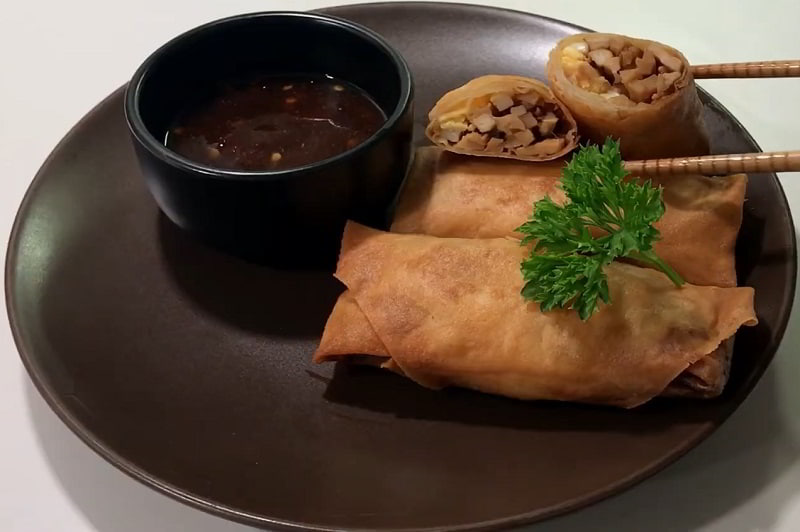
Lumpia Semarang is a popular dish in Javanese cuisine that originated from Semarang, a city in Central Java, Indonesia. It is a type of spring roll that is known for its delicious taste and unique filling. The filling of Lumpia Semarang usually consists of bamboo shoots, chicken, shrimp, and sometimes eggs, which are finely chopped and seasoned with various spices such as garlic, shallots, and pepper. The mixture is then wrapped in a thin crepe-like wrapper made from flour and egg, and deep-fried until crispy and golden brown.
Gethuk

Gethuk is a traditional Javanese dessert made from cassava, a root vegetable commonly found in Indonesia. The dish is simple yet delicious, making it a popular choice for both locals and tourists. To make Gethuk, the cassava is boiled until soft and then mashed into a smooth paste. Palm sugar is added to the mixture, giving it a sweet and caramel-like flavor. The mixture is then shaped into bite-sized pieces or formed into a cake-like shape. Gethuk can be enjoyed on its own or served with grated coconut on top for an added texture and flavor.
Roti Gambang
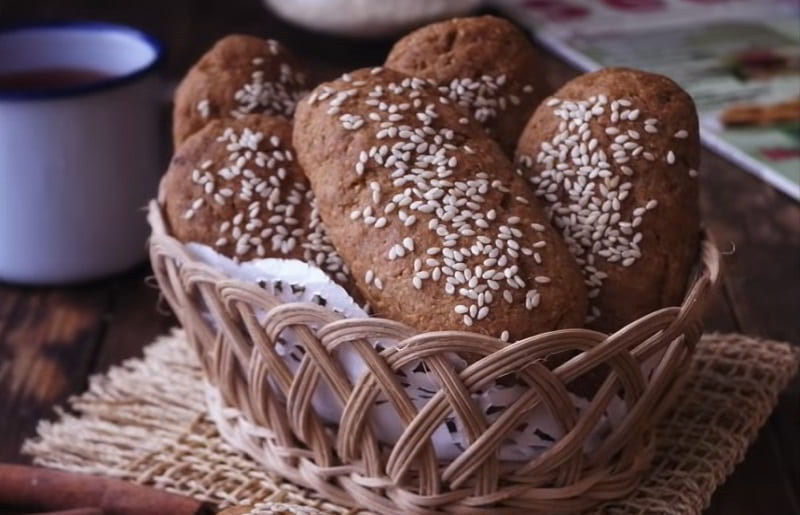
Roti Gambang, also known as Roti Ganjel Rel, is an Indonesian rectangular brown bread adorned with sesame seeds and infused with the delightful flavors of cinnamon and palm sugar. Originating from Jakarta, it is celebrated as a traditional Betawi bread. However, it is equally acknowledged as a Javanese traditional bread, recognized by the name Roti Ganjel Rel. This Javanese bread is particularly associated with cultural occasions such as Dugderan, Ramadan, Eid ul-Fitr, and other Javanese festivities. Its distinctive shape and aromatic blend of cinnamon and palm sugar make Roti Gambang a symbol of Betawi and Javanese culinary heritage. Delighting in its cultural significance, this bread serves as a flavorful and cherished addition to the culinary traditions observed during special events and celebrations in Indonesia.
Ayam Bumbu Rujak
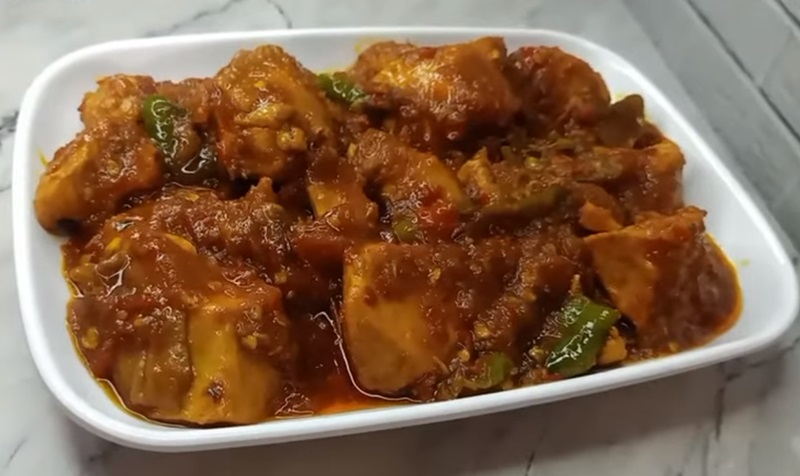
Ayam Bumbu Rujak, a classic Indonesian Javanese dish, features young chicken meat marinated in a vibrant red spice mixture and then grilled to perfection. The red base of the spice is a blend of salt, garlic, onion, and red chili, imparting a rich and flavorful profile. The term "rujak" is attributed to the array of spices used, reminiscent of those found in the sauce for traditional fruit rojak, including the addition of brown sugar. Often referred to as "ayam bakar bumbu rujak" due to its grilling method, it is considered a variant among various ayam bakar recipes. This dish showcases the intricate and aromatic flavors inherent in Indonesian culinary traditions, offering a delectable fusion of spice-infused grilled chicken.
Nasi Tempong
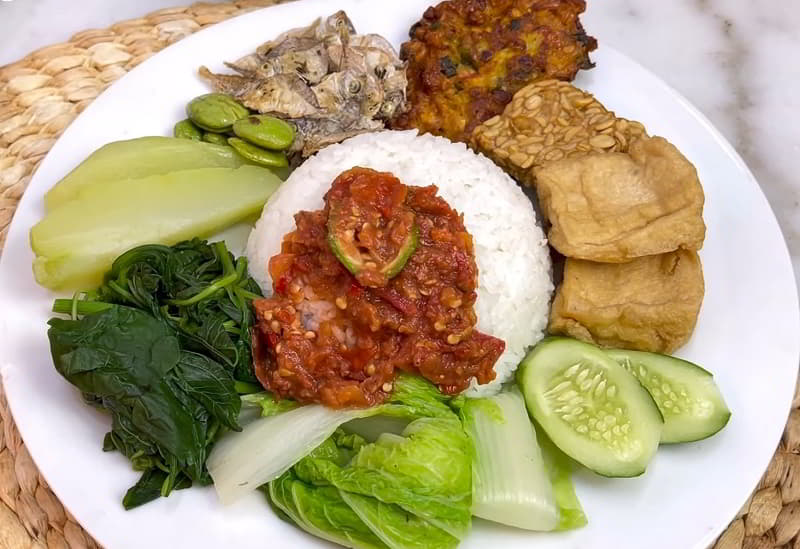
Nasi Tempong, a traditional rice dish, is a culinary specialty originating from the Osing people in Banyuwangi. This flavorful dish comprises steamed rice accompanied by a variety of components, including boiled vegetables such as spinach, cosmos, and basil leaves. The ensemble is further enhanced with tofu, tempeh, corn fritters, and crispy fried arid catfish. The dish is complete with a side of either kencur sambal or terasi sambal, adding a spicy and aromatic kick to the meal. Nasi Tempong stands out as a representation of the rich and diverse culinary heritage of Banyuwangi. The harmonious combination of rice and an array of locally sourced ingredients reflects the cultural significance of this dish within the Osing community, offering a delicious and satisfying culinary experience.
Nasi Gandul
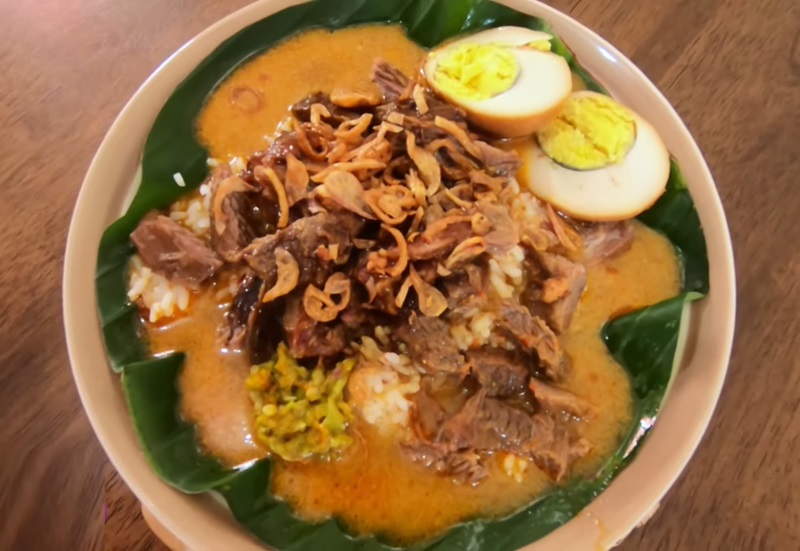
Nasi gandul is a traditional Javanese dish that originated from Central Java, Indonesia. It is a flavorful rice dish that is known for its rich and aromatic taste. The dish is made by cooking white rice with a blend of spices such as shallots, garlic, ginger, and coriander, which gives it a distinctively fragrant aroma. What sets nasi gandul apart is its tender and succulent beef, usually cooked with coconut milk and various spices like galangal, turmeric, and lemongrass. The beef is slow-cooked until it becomes tender and infused with the flavors of the spices. It is also commonly accompanied by fried tempeh, tofu, and boiled eggs. Nasi gandul is a hearty and satisfying dish that is loved by locals and visitors alike for its rich and complex flavors.
Nasi Bogana
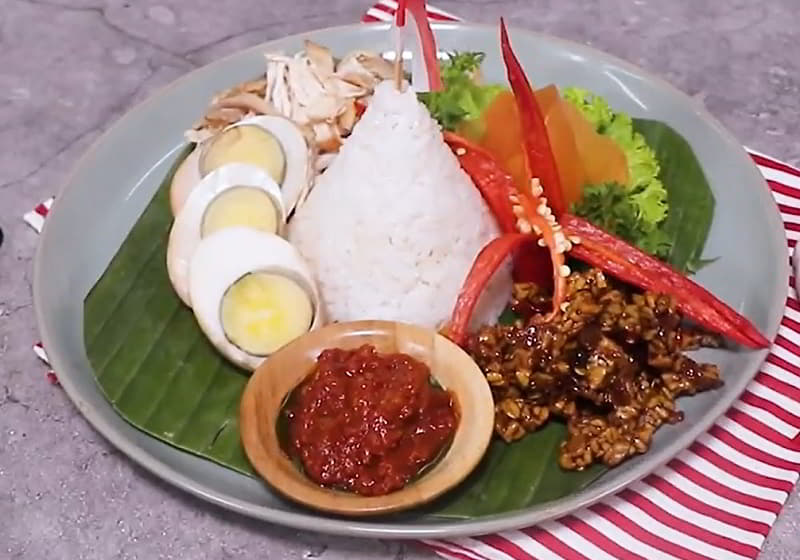
Nasi Bogana, also known as Nasi Begana, hails from Tegal, Central Java, and is a distinctive Indonesian rice dish. Typically encased in banana leaves, this flavorful creation is accompanied by an array of side dishes. To prepare Nasi Bogana, a generous layer of steamed rice is spread on a broad banana leaf, adorned with toppings like fried shallots. A second, smaller banana leaf is then placed over the rice, providing the canvas for an artful arrangement of side dishes. The assortment includes opor ayam, dendeng, spicy chicken liver and gizzard in chili-coconut gravy, sambal with shredded red chili, telur pindang, serundeng, and sautéed tempeh or string beans. The package is meticulously wrapped and secured with plastic strings, then steamed to maintain warmth. This culinary delight, combining diverse flavors and textures, showcases the cultural richness of Indonesian cuisine and is ready to be enjoyed at any time.
Brongkos
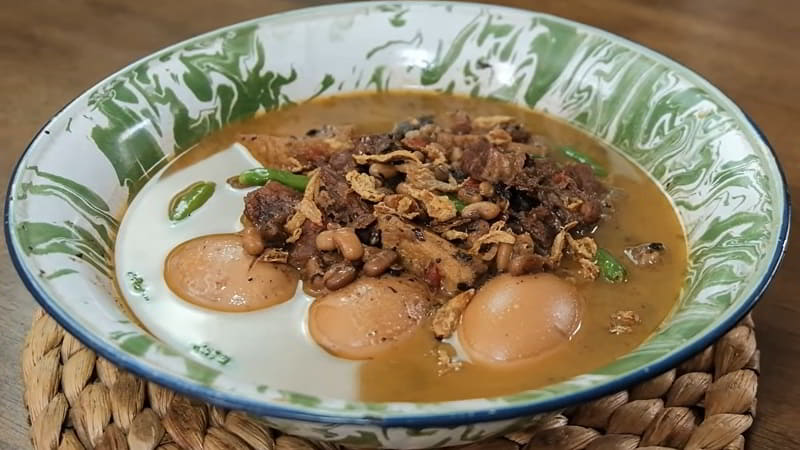
Brongkos, revered in Javanese culinary culture and renowned as a specialty in Yogyakarta and various cities across Central Java, Indonesia, is a captivating spicy stew that combines meat and beans. This enticing dish boasts a harmonious blend of goat meat, mutton, diced beef, hard-boiled eggs, and tofu, all simmered alongside black-eyed peas or red kidney beans. The addition of chayote and occasional carrots introduces a delightful textural dimension to the stew. Crafted with a coconut milk base, Brongkos features a rich infusion of spices, including black kluwek, bay leaves, lemongrass, salt, kaffir lime leaves, and palm sugar. The intricate spice paste, composed of shallot, coriander, ground galangal, ginger, kencur, and roasted candlenut, contributes depth and complexity to the dish. Enhanced by a generous inclusion of bird's eye chilies, Brongkos emerges as a cherished and spicy masterpiece within the vibrant tapestry of Indonesian culinary traditions.
Madumongso

Madumongso, also known as madumangsa, is a delectable Javanese snack originating from Ponorogo, East Java. This delightful treat is crafted using black sticky rice as its primary ingredient. The distinctive sweetness of Madumongso arises from the prior processing of black rice, undergoing fermentation to become tapai and later cooked into the beloved dodol confection. The careful preparation of black sticky rice and its transformation through fermentation and cooking contribute to the unique taste profile of Madumongso. This snack encapsulates the rich culinary heritage of Ponorogo and showcases the artistry of turning traditional ingredients into a sweet and satisfying indulgence. Whether enjoyed as a local delicacy or discovered as a culinary gem, Madumongso stands as a testament to the diverse and flavorful offerings found in Javanese cuisine.
Nasi Goreng Jawa
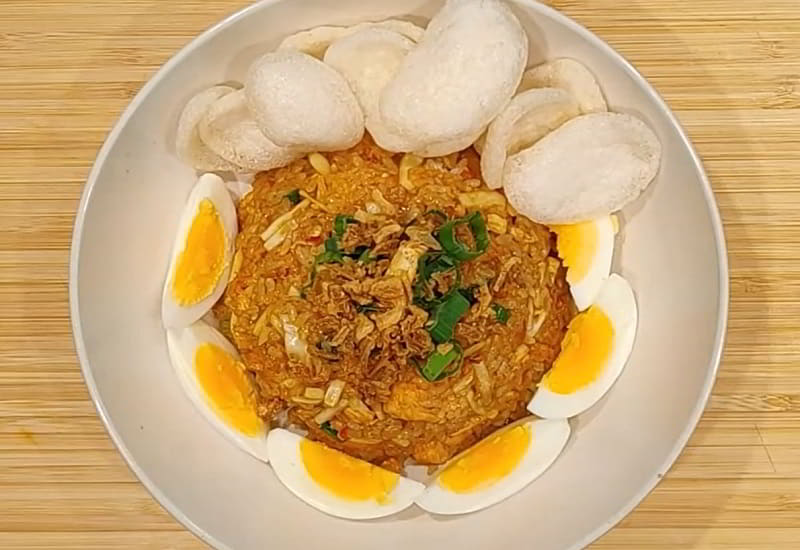
Nasi goreng Jawa is a popular dish in Javanese cuisine. It is a delicious fried rice dish that originated from the island of Java in Indonesia. The dish typically starts with cooked rice that is stir-fried with various ingredients. It often includes vegetables like carrots, peas, and cabbage, as well as proteins such as chicken, beef, or shrimp. The rice is seasoned with a combination of sweet soy sauce, kecap manis, garlic, shallots, and chili paste (sambal), giving it a rich and savory taste. Nasi goreng Jawa is usually garnished with a fried egg, sliced tomatoes, and cucumber, adding freshness and texture to the dish.
Buntil
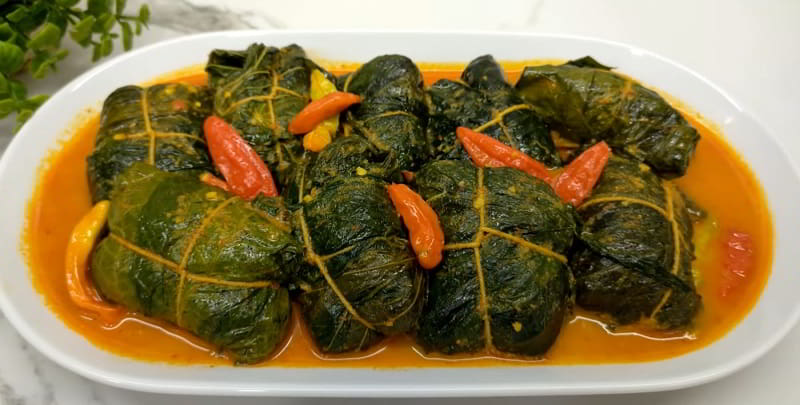
Buntil stands as a classic Indonesian-Javanese culinary delight, consisting of grated coconut mixed with anchovies (teri) and an array of spices. This flavorful blend is carefully enveloped in leaves from papaya, cassava, taro, or other similar aroid plants, creating a distinctive package. The wrapped bundle is then boiled in a rich concoction of coconut milk and spices. Popular across Java, Buntil is not only a cherished homemade dish but also finds its way to warungs, restaurants, and street-side food stalls. Particularly prominent during the Ramadan season, Buntil graces traditional temporary markets, offering a delightful option for breaking the fast. Its unique combination of textures and flavors encapsulates the essence of Javanese culinary traditions, making Buntil a favored and widely enjoyed dish in Indonesia.
Rambak Petis

Rambak petis is a popular dish in Javanese cuisine that is known for its rich flavors and unique combination of ingredients. It is a savory dish made primarily from rambak, which is deep-fried cow or buffalo skin, and petis, a thick, sweet shrimp paste. To prepare rambak petis, the rambak is first sliced into thin, crispy pieces and then served with a generous amount of petis sauce. The petis sauce is made by combining shrimp paste, garlic, shallots, palm sugar, and various spices. The resulting sauce is sweet, tangy, and slightly spicy, providing a perfect complement to the crispy rambak. Rambak petis is typically enjoyed as a snack or appetizer, and it is often accompanied by steamed rice and fresh vegetables.
Lontong Balap
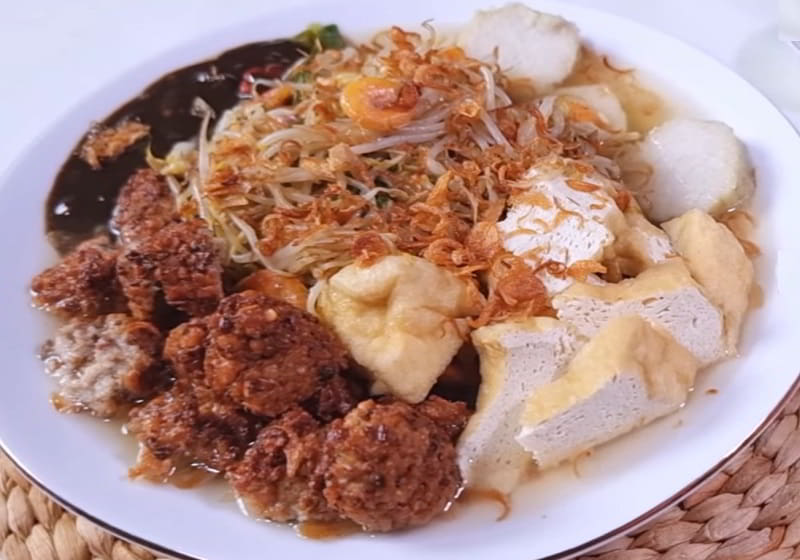
Lontong balap is a traditional Javanese dish that originates from Surabaya, a city in Indonesia. It is a popular street food that is loved by locals and visitors alike. Lontong balap is a combination of several ingredients that create a unique and delicious flavor. The main component of lontong balap is lontong, which is a compressed rice cake made from rice that has been wrapped in banana leaves and then steamed. The lontong is then cut into small cubes and served as the base of the dish. On top of the lontong, a mixture of bean sprouts, tofu, lentho (fried lentil cakes), and fried shallots is added. This combination provides a variety of textures and flavors that complement each other perfectly. To enhance the taste, lontong balap is also served with a flavorful sauce made from soy sauce, garlic, chili, and shrimp paste.
Sumpia
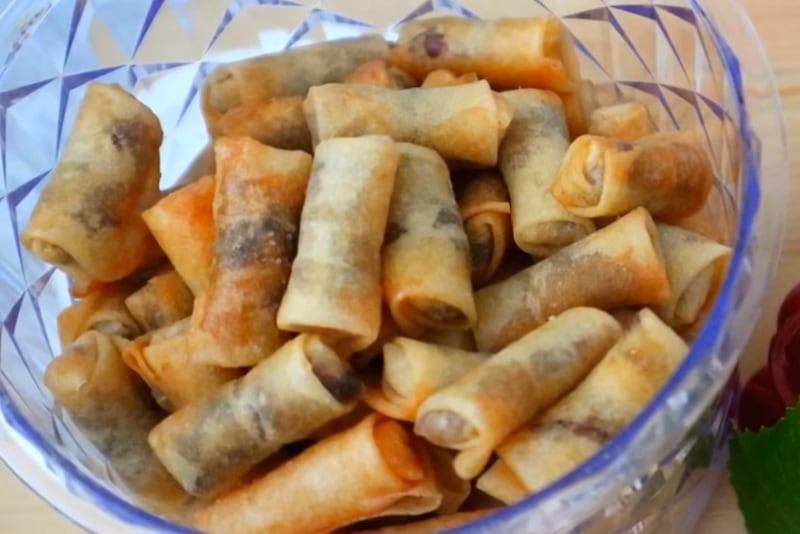
Sumpia is a popular dish in Javanese cuisine that is loved for its delicious flavors and unique presentation. Sumpia is essentially a type of spring roll but with a distinct Javanese twist. The filling typically consists of a mixture of vegetables, such as carrots, and bean sprouts, combined with chicken or shrimp. The filling is then seasoned with a blend of aromatic herbs and spices, including garlic, shallots, and coriander. What sets Sumpia apart is its crispy and flaky pastry shell. The pastry is made by combining flour, water, and a pinch of salt then rolled out thinly and filled with the vegetable and meat mixture. The rolls are then deep-fried until golden brown and crispy.
Nasi Jamblang
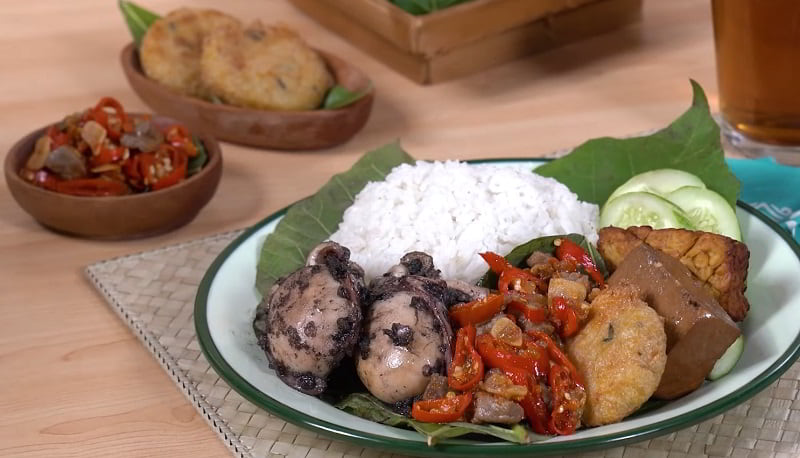
Nasi Jamblang is a notable culinary specialty originating from Cirebon, West Java, Indonesia. This dish is renowned for its distinctive serving style, often found in traditional eateries known as "warung nasi jamblang." The centerpiece of Nasi Jamblang is a variety of pre-cooked dishes, displayed in an enticing array. Customers can choose from an assortment of side dishes, including meats, seafood, vegetables, and various condiments. Once selections are made, these choices are then arranged on a plate of white rice wrapped in teak leaves. The teak leaves not only add a unique fragrance to the dish but also serve as a practical and eco-friendly way to present and package the meal. Nasi Jamblang provides a culinary experience that captures the diverse flavors of Cirebonese cuisine, offering a combination of savory delights that has made it a popular and iconic dish in the region.
Sate Klatak
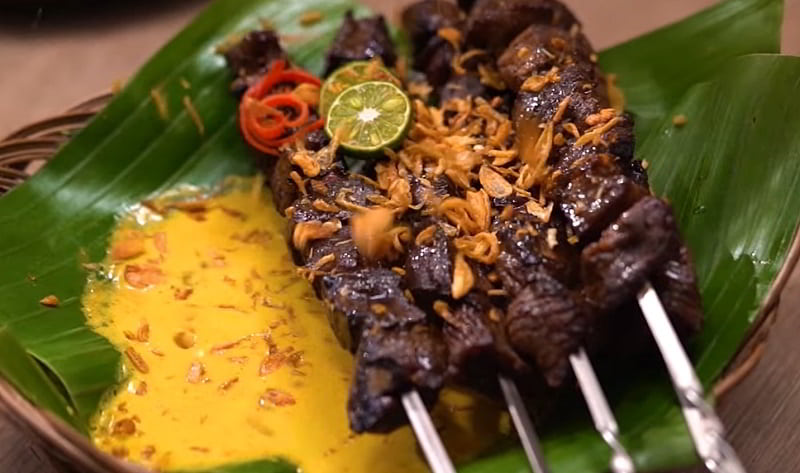
Sate Klatak, a distinctive goat or mutton satay, originates from the Pleret District in Bantul Regency, Yogyakarta. Uniquely, the term "klathak" in Javanese refers to the process of roasting satay over an open flame. Diverging from other satay variations, Sate Klatak relies on minimal marination of mainly salt and a touch of pepper. The skewers, crucial for grilling, are crafted from iron, in contrast to the bamboo skewers commonly used for other satays. The iron skewers serve as effective heat conductors, ensuring even cooking throughout the meat. Typically accompanied by gulai, a spiced curry soup, the dish attains a rich flavor. The gulai, sometimes simmered with lamb bone, undergoes a meticulous cooking process over a small flame, intensifying its taste during approximately 30 minutes of preparation.
Geplak
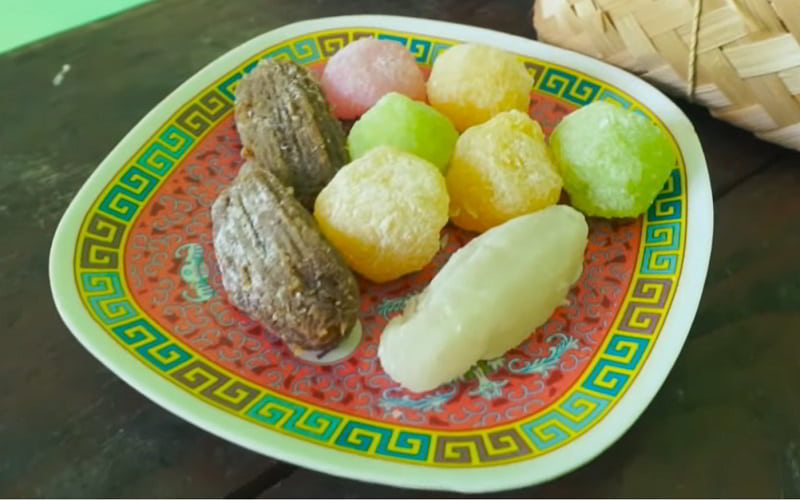
Geplak, a delightful Indonesian sweet originating from Java, is a delectable snack crafted from an equal combination of coarsely grated coconut and sugar, often enhanced with vibrant colors. Some variations may incorporate ingredients like rice flour, citrus leaves, or pumpkin, adding nuanced flavors and textures to this confection. The charmingly colorful Geplak is particularly associated with the city of Bantul in Yogyakarta, Indonesia. This sweet treat exemplifies the artistry of Javanese culinary traditions, where simple ingredients are transformed into a visually appealing and flavorful delight. The combination of grated coconut and sugar forms the foundation of Geplak, creating a harmonious balance of sweetness and texture. With its origins rooted in Java and a notable presence in Bantul, Geplak remains a cherished snack, reflecting the diverse and rich tapestry of Indonesian sweets.
Pecel Ayam
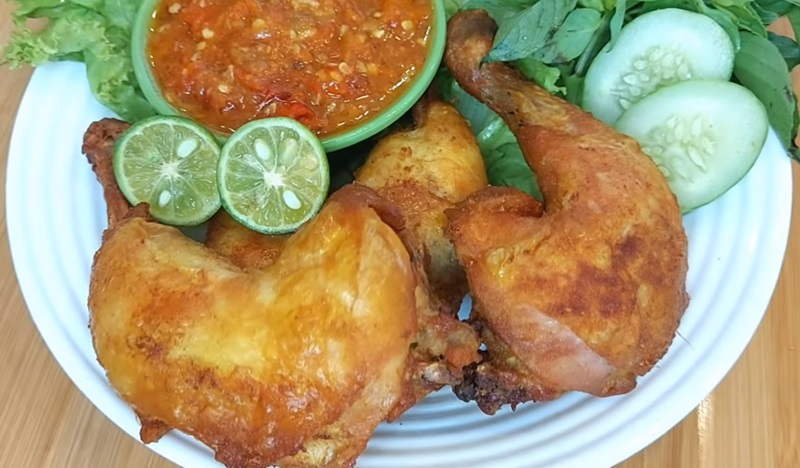
Pecel Ayam, a traditional dish of the Kemiren Banyuwangi Osing tribe in East Java, Indonesia, is a flavorful chicken delicacy celebrated for its unique preparation. The dish involves marinating the chicken in salted tamarind water and spices, including cutchery, peanuts, onions, kaffir lime leaves, garlic, and a sachet of shrimp paste. Optionally, cayenne or chili can be added for extra spice, and basil leaf and lime juice may enhance the flavor. The chicken is then rubbed with salt, tamarind water, and spices, baked until perfectly cooked and browned, and finally shredded. Meanwhile, the sauce is created by cooking grated coconut with additional spices like chili, salt, fried nutmeg, and roasted peanuts. This flavorful mixture is combined with the shredded chicken, and optionally, lime juice is added for a citrusy kick. Pecel Ayam, with its intricate blend of spices and textures, is then ready to be served, showcasing the culinary richness of the Osing tribe in Indonesia.
Tahu Campur
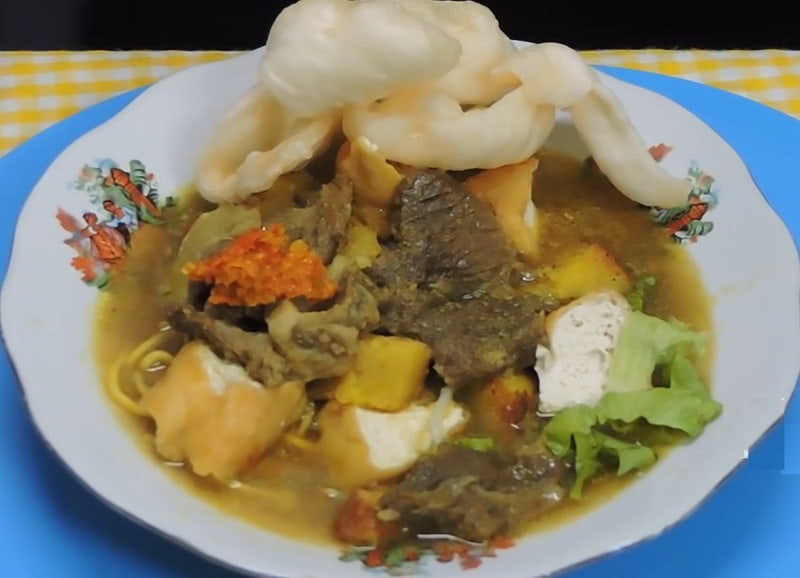
Tahu Campur, translating to "mixed tofu" in both Javanese and Indonesian, represents a flavorful East Javanese culinary creation. This dish incorporates rice cakes (lontong), fried black-eyed pea patty (lentho), fried tofu (tahu goreng), and, alternatively potato or cassava patty cakes (perkedel). Complemented by yellow noodles, fresh bean sprouts, krupuk crackers, and lettuce, the ensemble is immersed in a savory beef stew. The beef stew, seasoned with spices and enriched with petis, a distinct shrimp paste prevalent in East Javanese cuisine, forms the heart of this delectable offering. Topped with fried onions and served with sambal chili sauce, Tahu Campur delights with its diverse textures and rich blend of flavors, showcasing the culinary expertise of East Java.
Megono
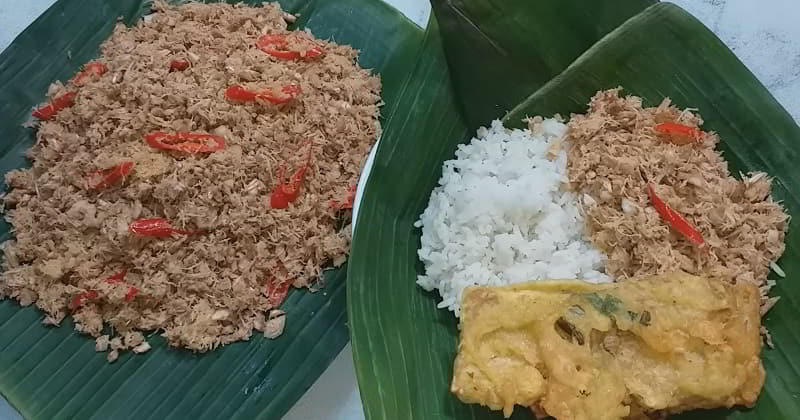
Megono, hailing from Central Java, Indonesia, particularly the regency of Pekalongan, is a traditional Javanese dish celebrated for its unique blend of flavors. This culinary gem features rice adorned with chopped young jackfruit, expertly mixed with grated coconut, and a medley of aromatic spices. The result is a delightful harmony of textures and tastes that characterize the regional culinary richness. When served, Nasi Megono is often accompanied by mendoan, a distinctive element of the dish. Mendoan is a thinly fried, half-cooked, starchy tempeh, enhancing the overall culinary experience. The combination of rice, jackfruit, coconut, and spices, complemented by the unique addition of mendoan, showcases the cultural and gastronomic diversity of Central Java, making Megono a cherished and flavorsome representation of Indonesian cuisine.
Rujak Soto
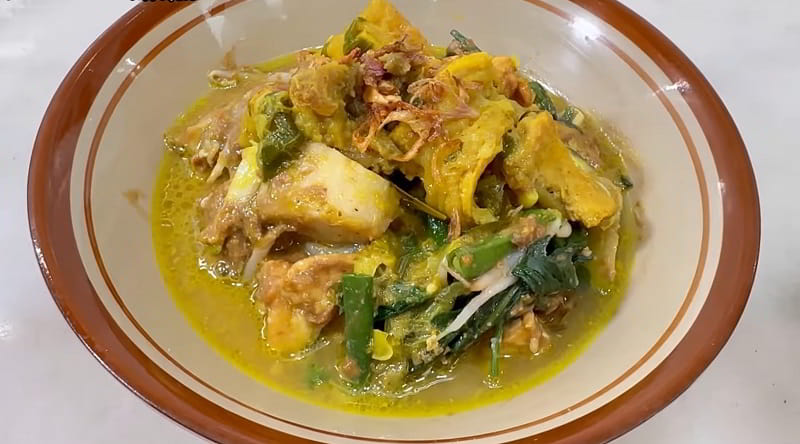
Rujak Soto, an Indonesian culinary delight, ingeniously combines the elements of beef soto and rujak cingur to form a unique and flavorful salad. Originating from Banyuwangi, East Java, this dish is a local specialty cherished by the Javanese (Osing) community. The preparation involves a captivating blend of vegetables, such as water spinach and bean sprouts, served with lontong rice cake and bathed in a petis sauce. To elevate the dish, it is generously poured with soto soup, creating a delightful fusion of flavors and textures. This Osing delicacy showcases the artistry of culinary traditions in East Java, where the savory essence of soto harmoniously intertwines with the vibrant and tangy notes of rujak. Often enjoyed with es temulawak, a refreshing drink made from Curcuma zanthorrhiza, Rujak Soto stands as a testament to the creative and diverse offerings found in Javanese cuisine.
Gaplek

Gaplek, a staple in Javanese and Indonesian cuisine, is crafted from sliced, dried cassava roots. Primarily produced in the limestone uplands of Java, where the soil conditions are less conducive for rice cultivation, gaplek serves as a resilient alternative. The cassava roots undergo a meticulous process of harvesting, peeling, slicing into 6 to 8-inch pieces, and sun-drying for 1 to 3 days. Once dried, gaplek is stored in a cool, dry environment, remaining relatively resistant to pests. During times when other food sources are scarce or costly, gaplek pieces are pounded into small bits and prepared akin to rice. Additionally, they serve as raw material for creating other dishes like tiwul, growol, gogik, and gatot. This versatile use of gaplek highlights its significance as a practical and enduring component in Javanese and Indonesian culinary traditions.
Klanting

Klanting, a cherished traditional dish among the Javanese, is renowned for its unique preparation. Crafted from corn starch, this delicacy boasts a distinctive rubber-like texture reminiscent of agar-agar. Available in an array of vibrant colors, including red and green, Klanting's subtle taste serves as the perfect canvas for traditional accompaniments. Grated coconut and sugar merah are generously sprinkled over Klanting, imparting a delightful sweetness. Frequently encountered in traditional markets like Pasar Legi in Jombang, Klanting is a testament to the rich culinary heritage of the Javanese people. Its simple yet appealing combination of ingredients and textures makes Klanting a beloved treat, offering a glimpse into the traditional flavors that have stood the test of time in Javanese cuisine.
Getuk Goreng
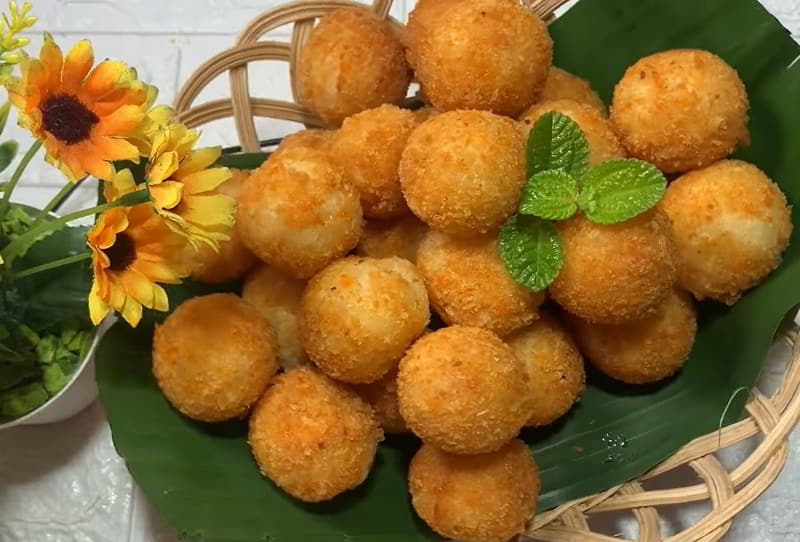
Javanese cuisine is known for its rich flavors and diverse range of dishes. One popular dish that exemplifies this is Getuk Goreng. Getuk Goreng is a traditional Javanese snack made from cassava. It is a deep-fried delicacy that is crispy on the outside and soft on the inside. To prepare Getuk Goreng, cassava is first boiled until tender and then mashed into a smooth paste. The paste is then mixed with grated coconut and a touch of sugar to add sweetness. This mixture is shaped into small bite-sized pieces and deep-fried until golden brown. The result is a deliciously crispy snack that is enjoyed by locals and tourists alike. The outer layer of Getuk Goreng is crunchy and slightly caramelized, while the inside remains moist and fluffy. The combination of the cassava's natural sweetness and the added sugar creates a perfect balance of flavors.
Brengkes
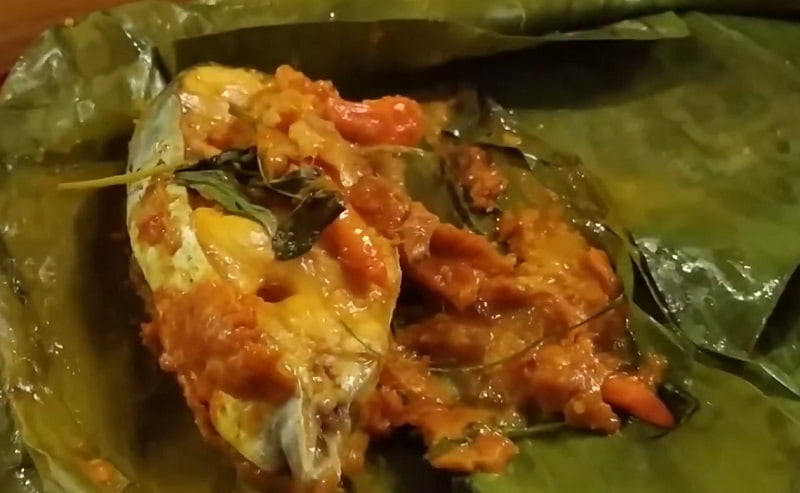
Brengkes is a traditional Indonesian dish that originates from Palembang, South Sumatra. The dish is known for its distinctive cooking method, where fish is wrapped in banana leaves and then grilled. The fish used in Brengkes is often freshwater fish, and it is seasoned with a mixture of spices, herbs, and grated coconut. The preparation involves marinating the fish with a blend of aromatic ingredients, which may include turmeric, galangal, lemongrass, lime leaves, shallots, garlic, and chilies. The marinated fish is then wrapped in banana leaves, creating a parcel that is secured with bamboo sticks or strings. The banana leaf parcel is grilled over open flames or charcoal, allowing the fish to absorb the flavors of the spices and achieve a smoky taste from the grilling process. Brengkes showcases the rich culinary diversity of Indonesia, combining locally available ingredients and traditional cooking techniques to create a flavorful and aromatic dish.







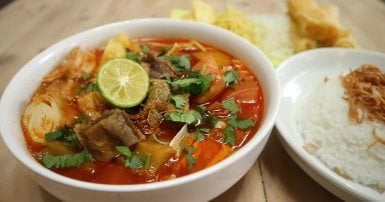
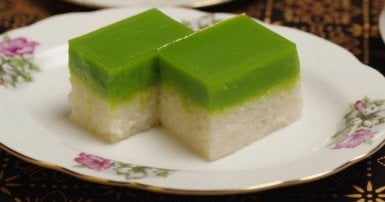
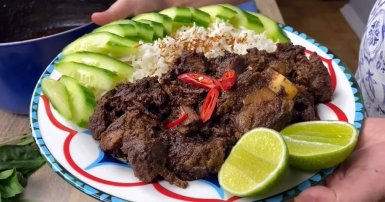
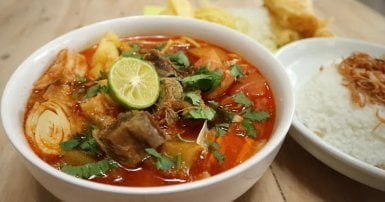
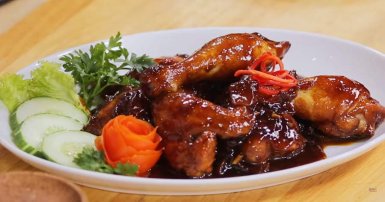

-1709813013.jpg)


